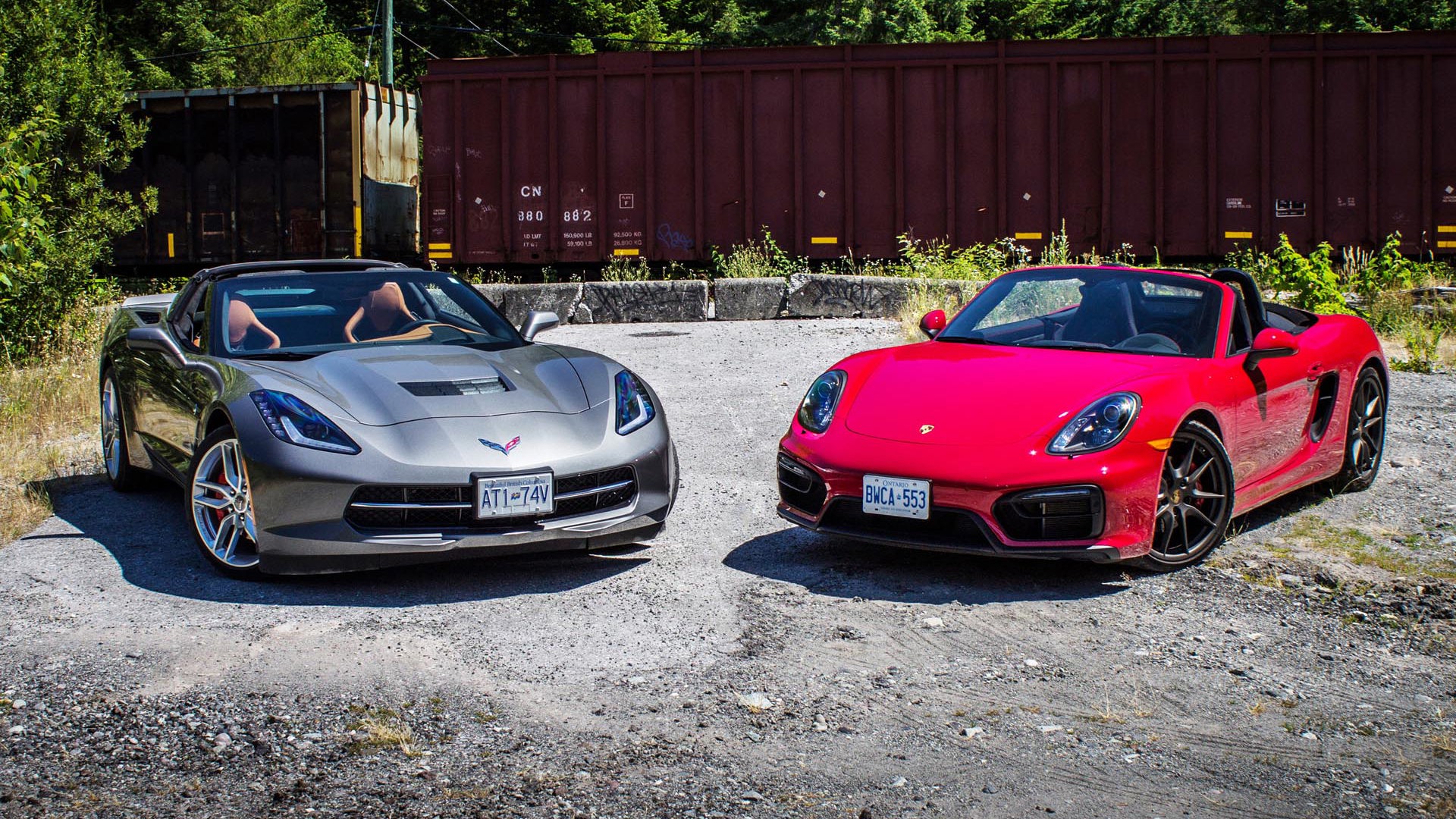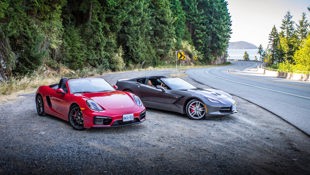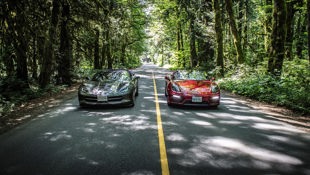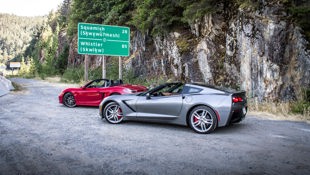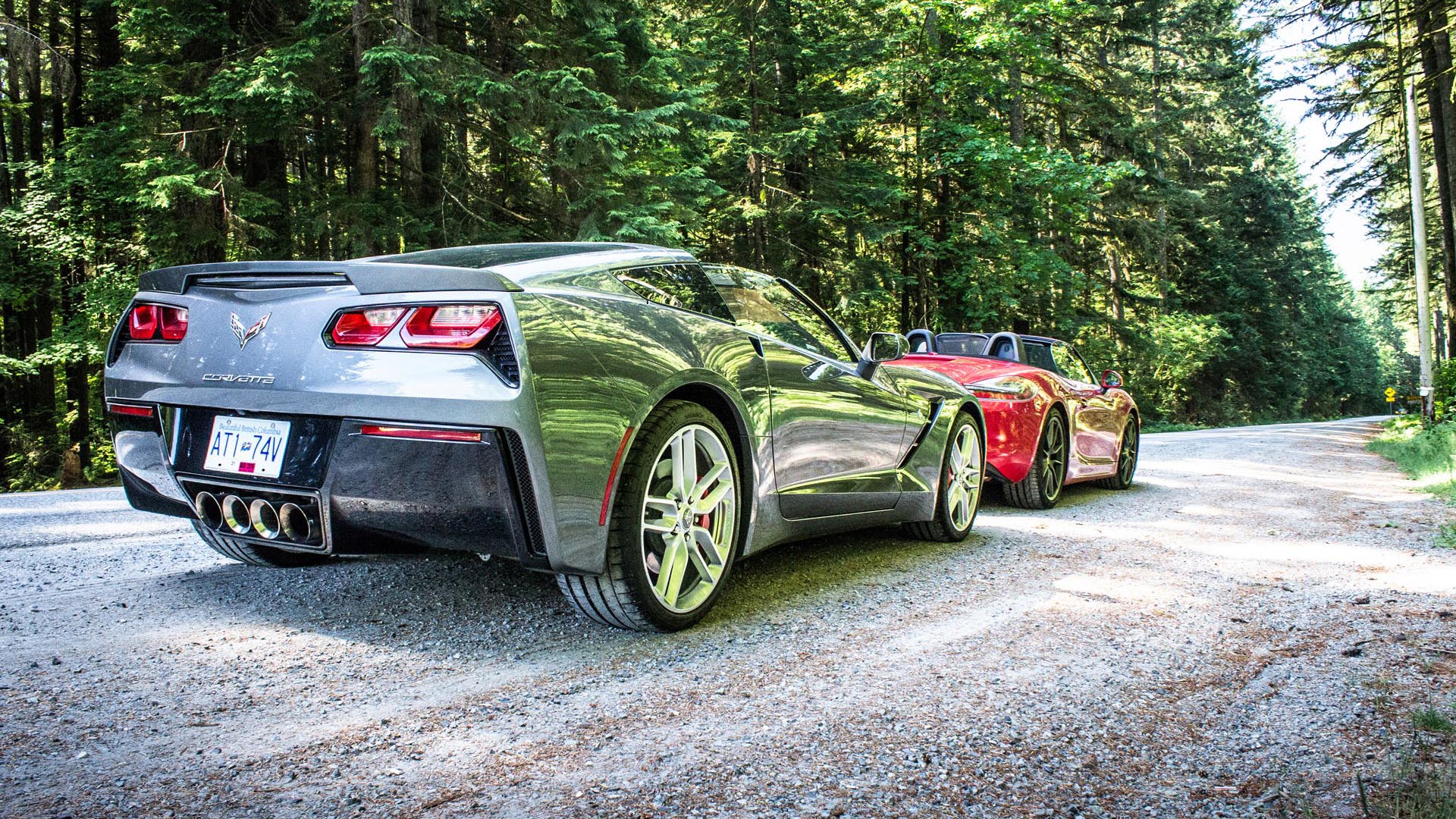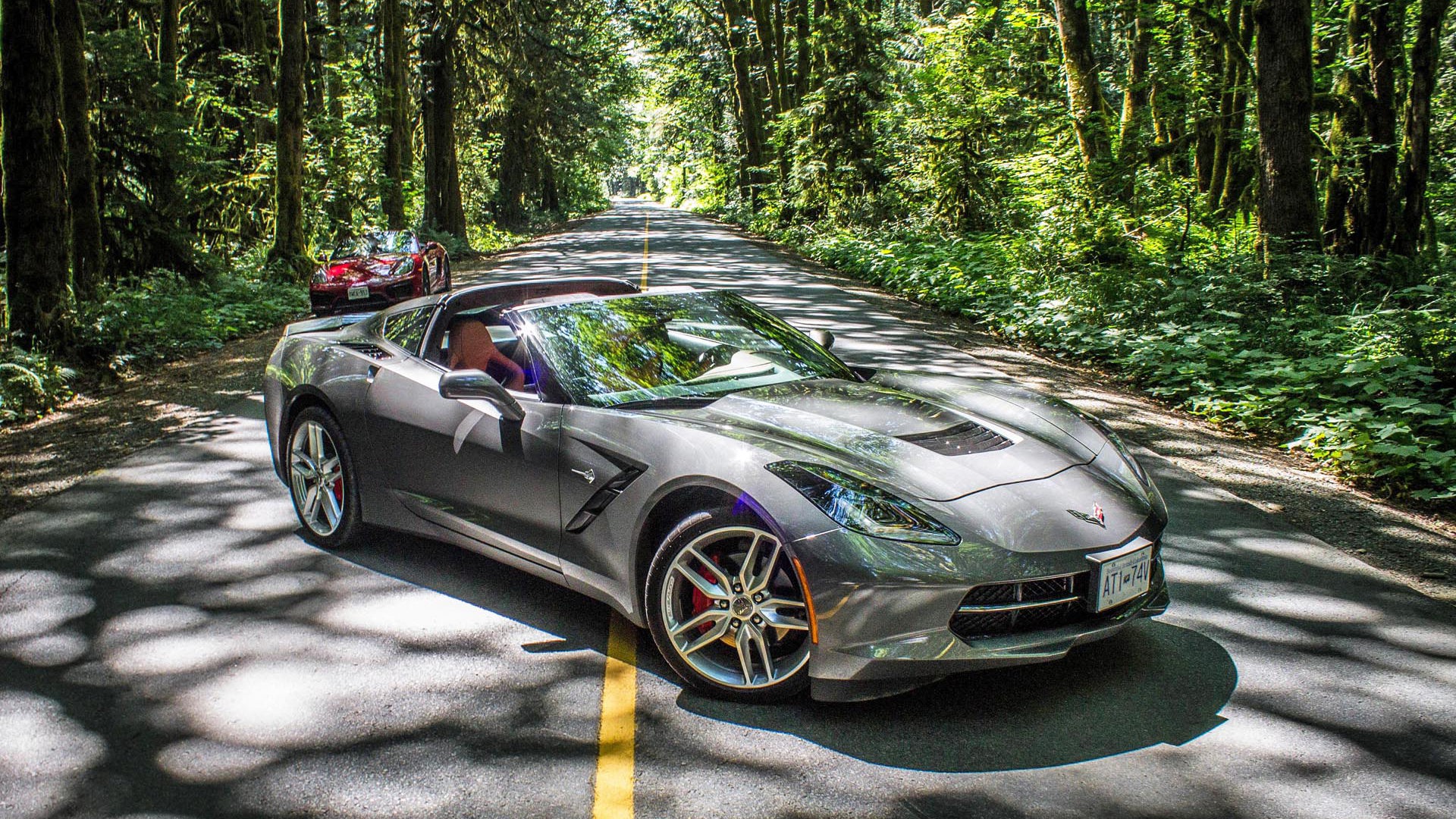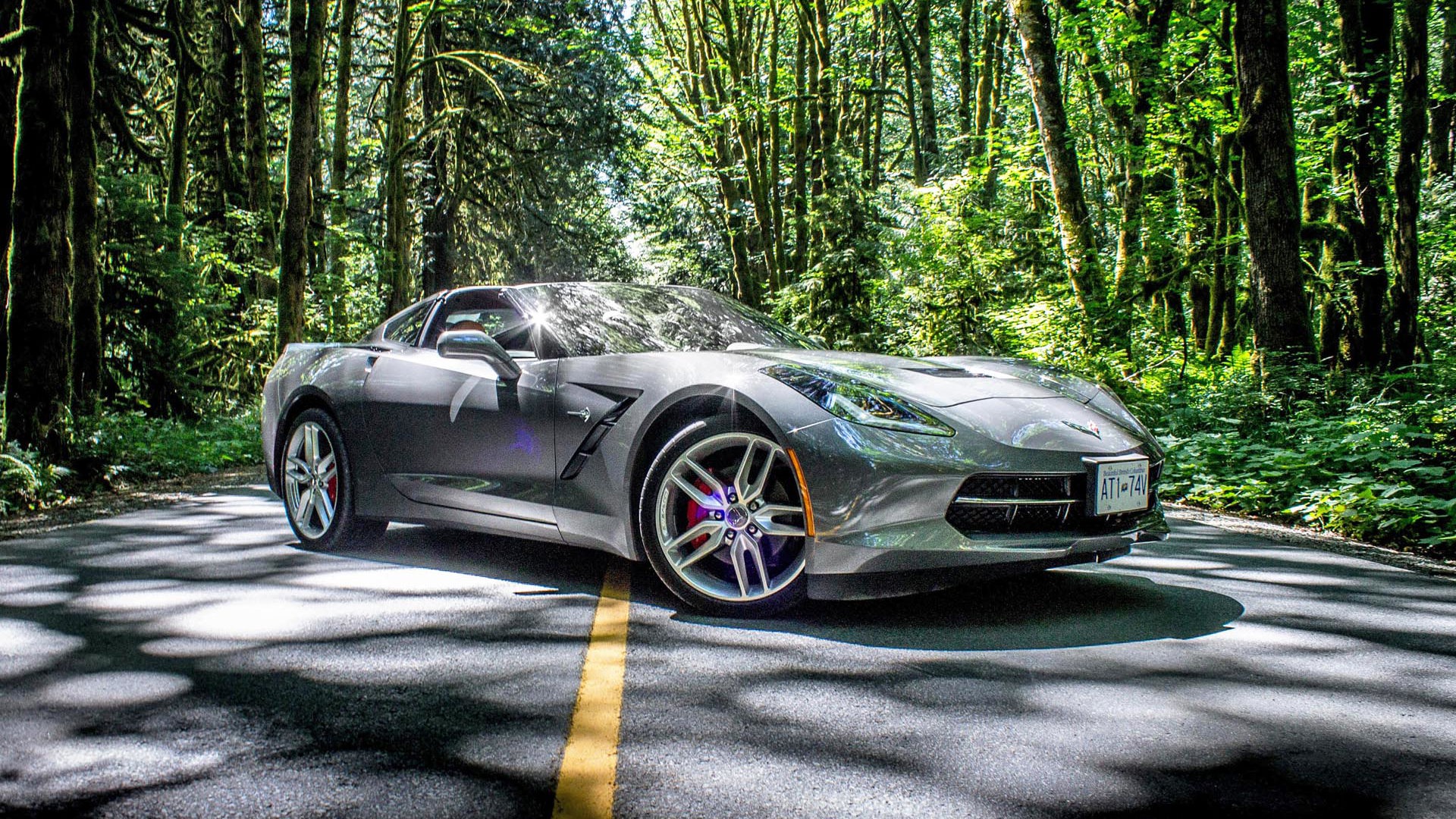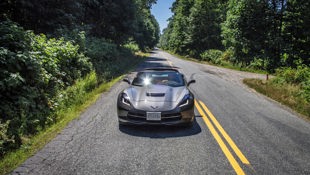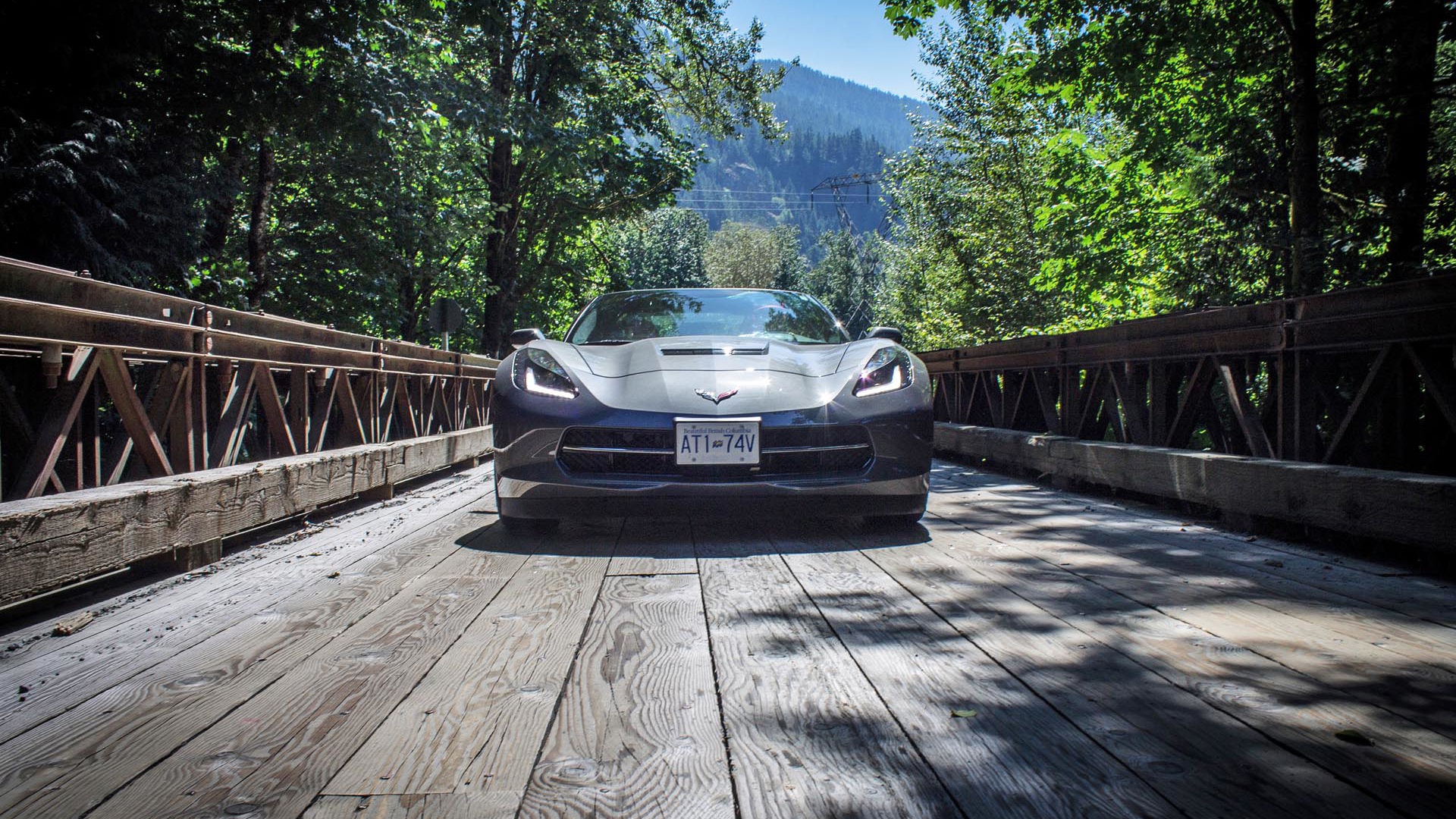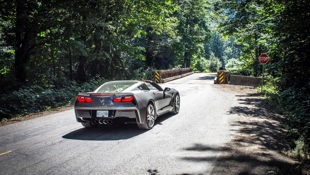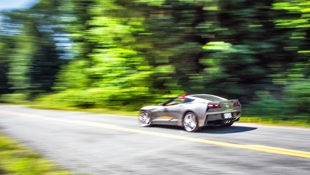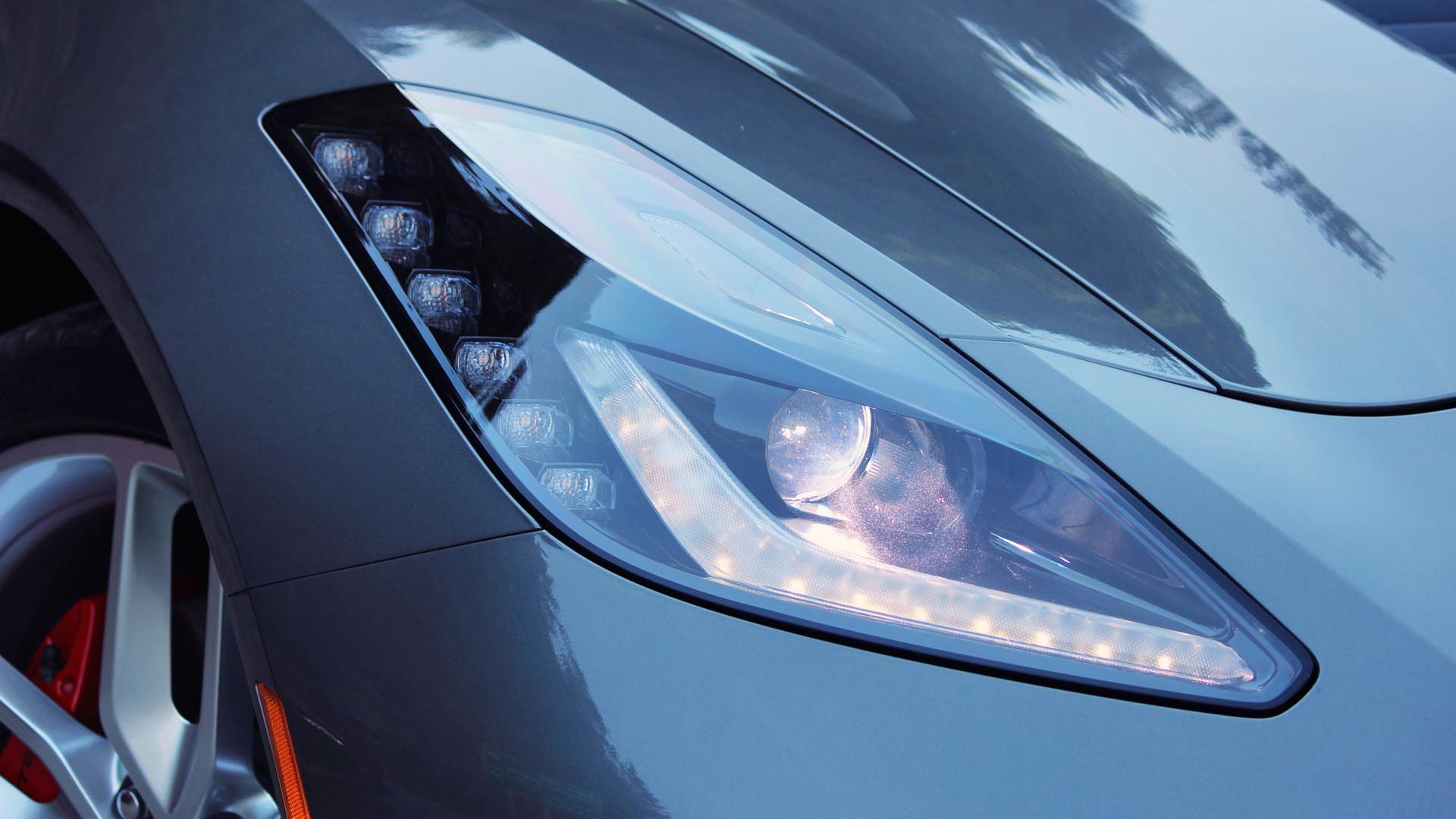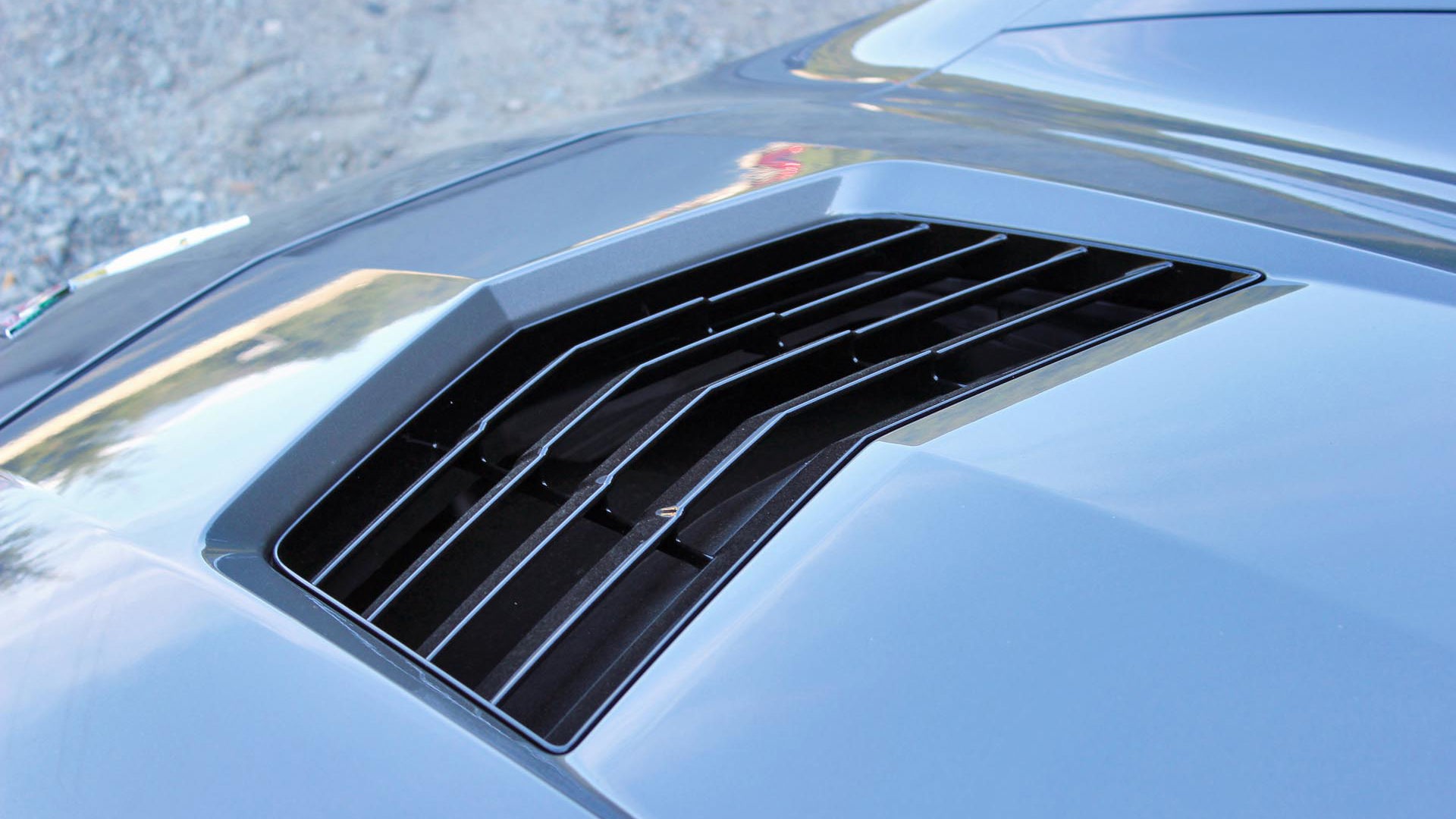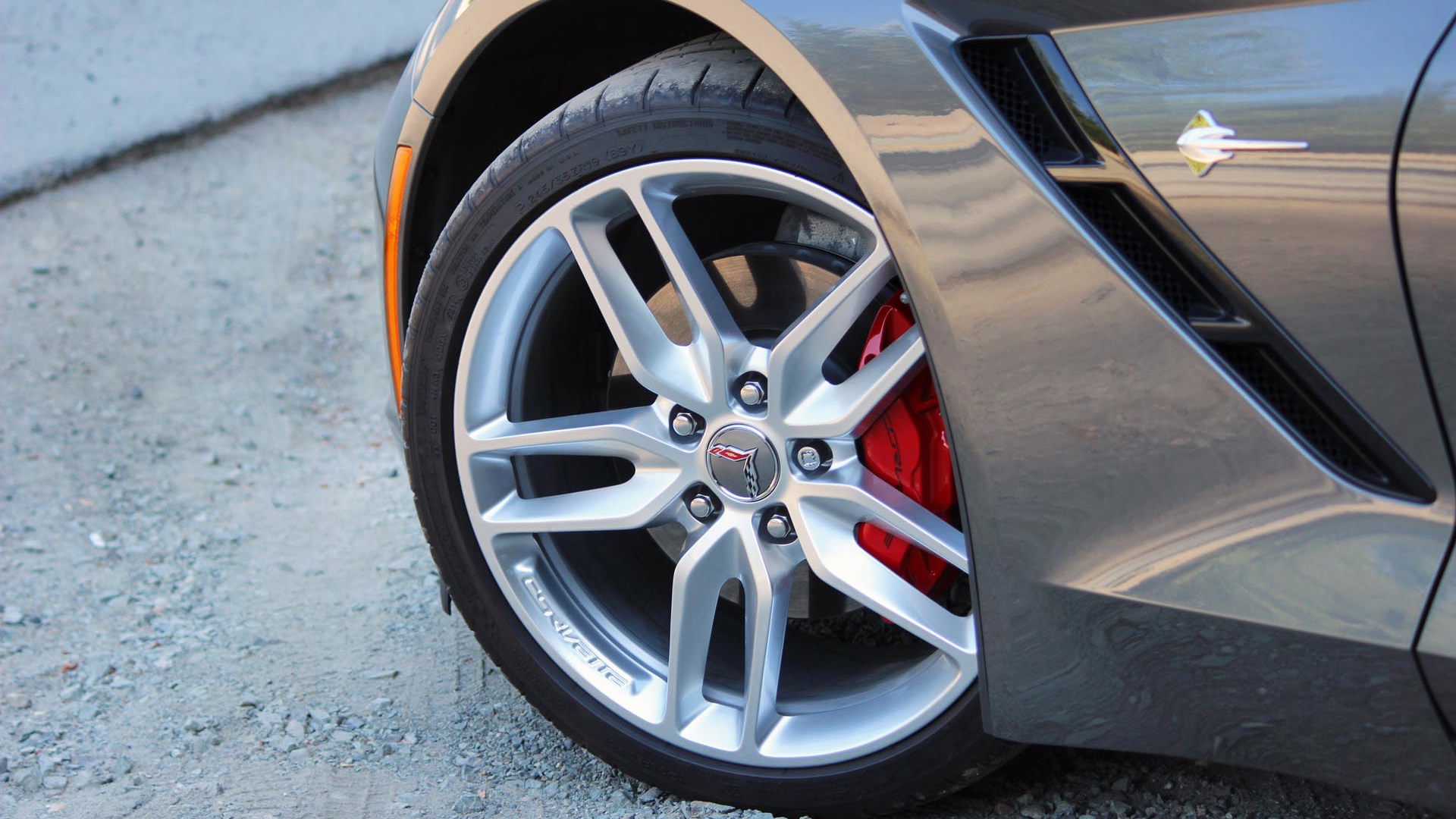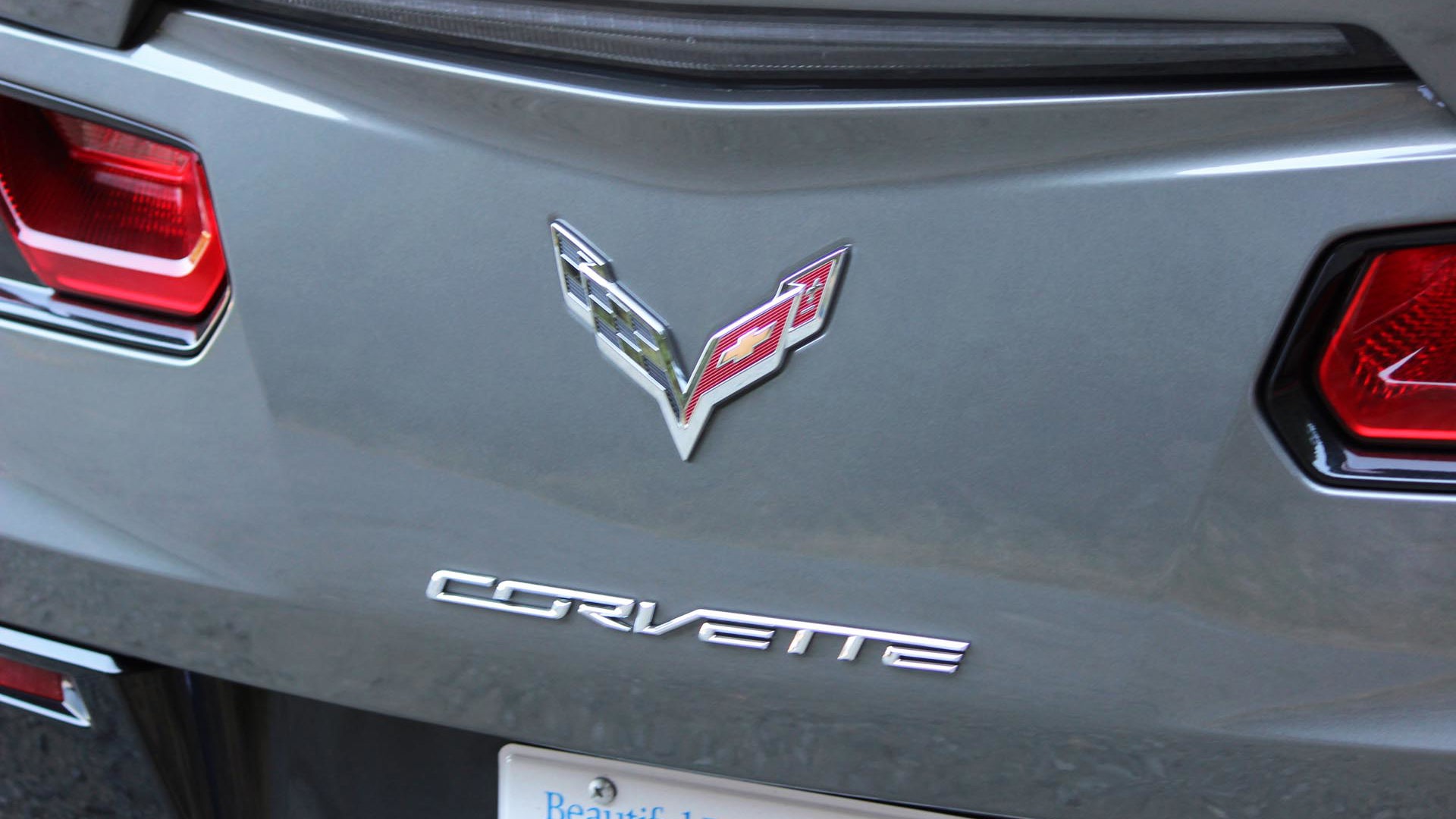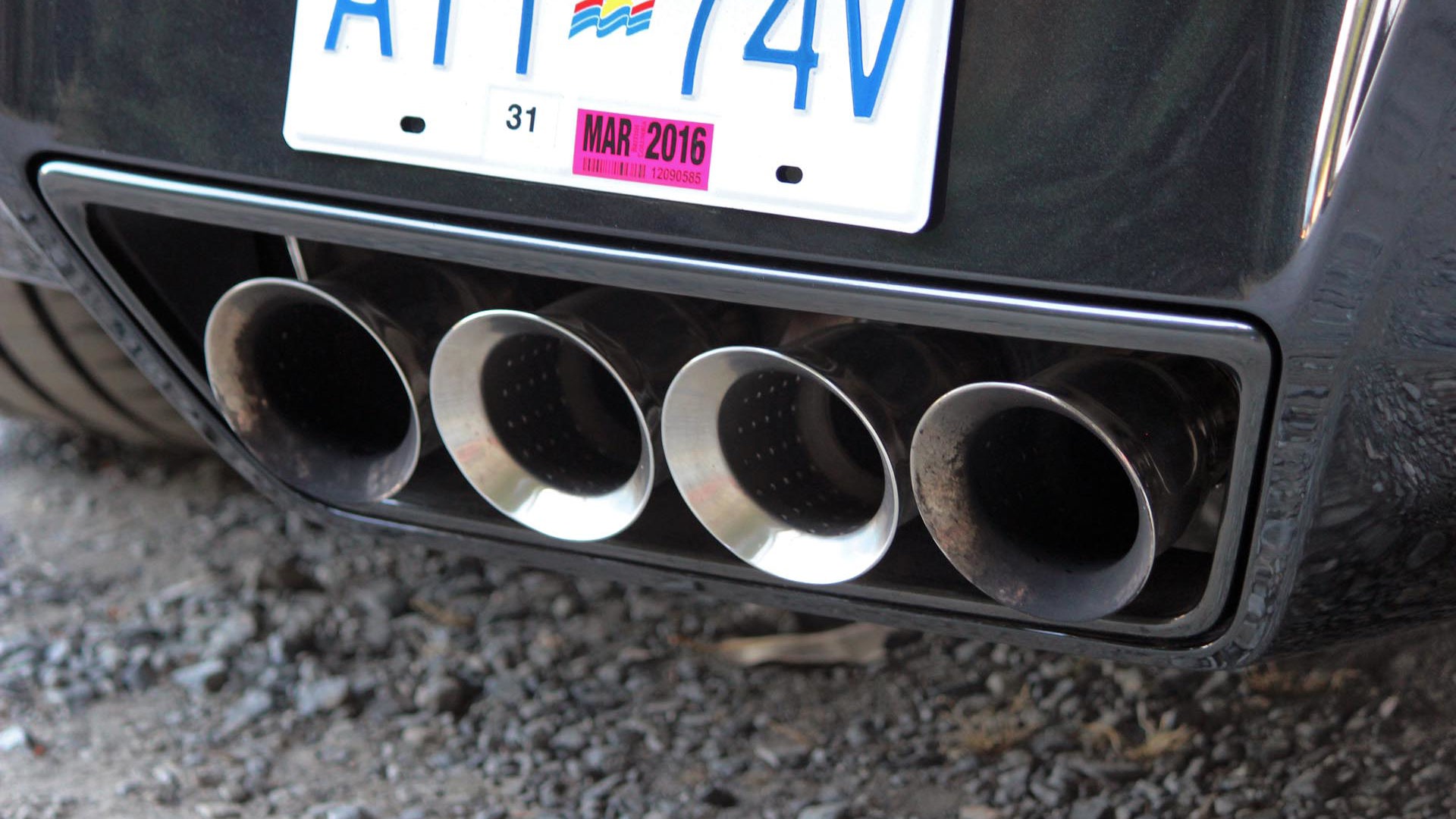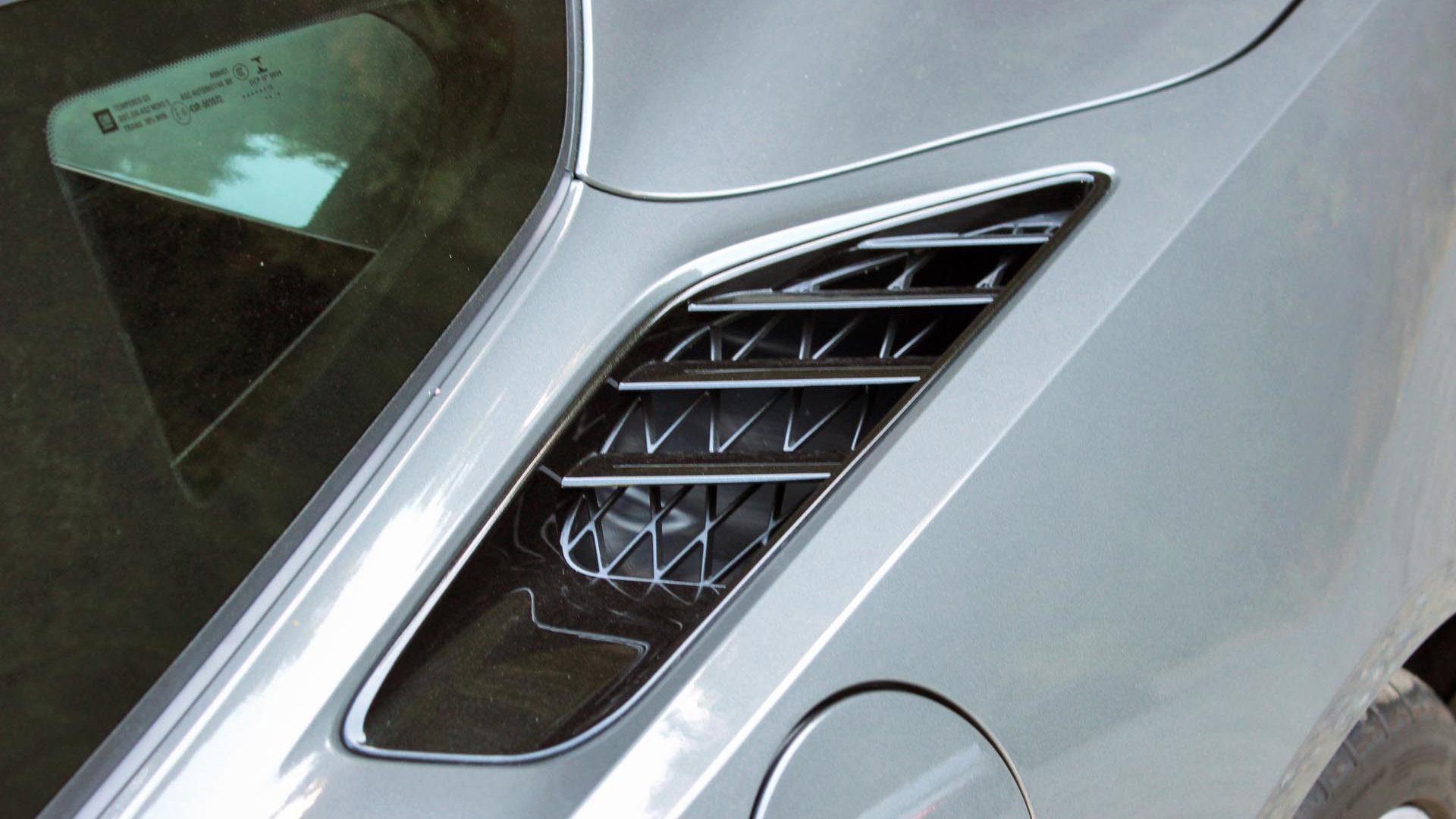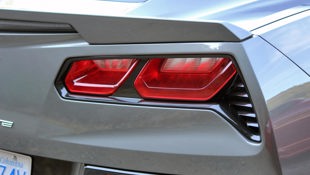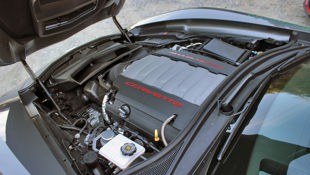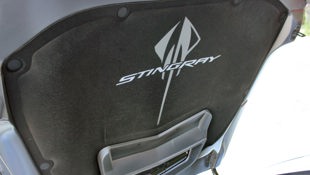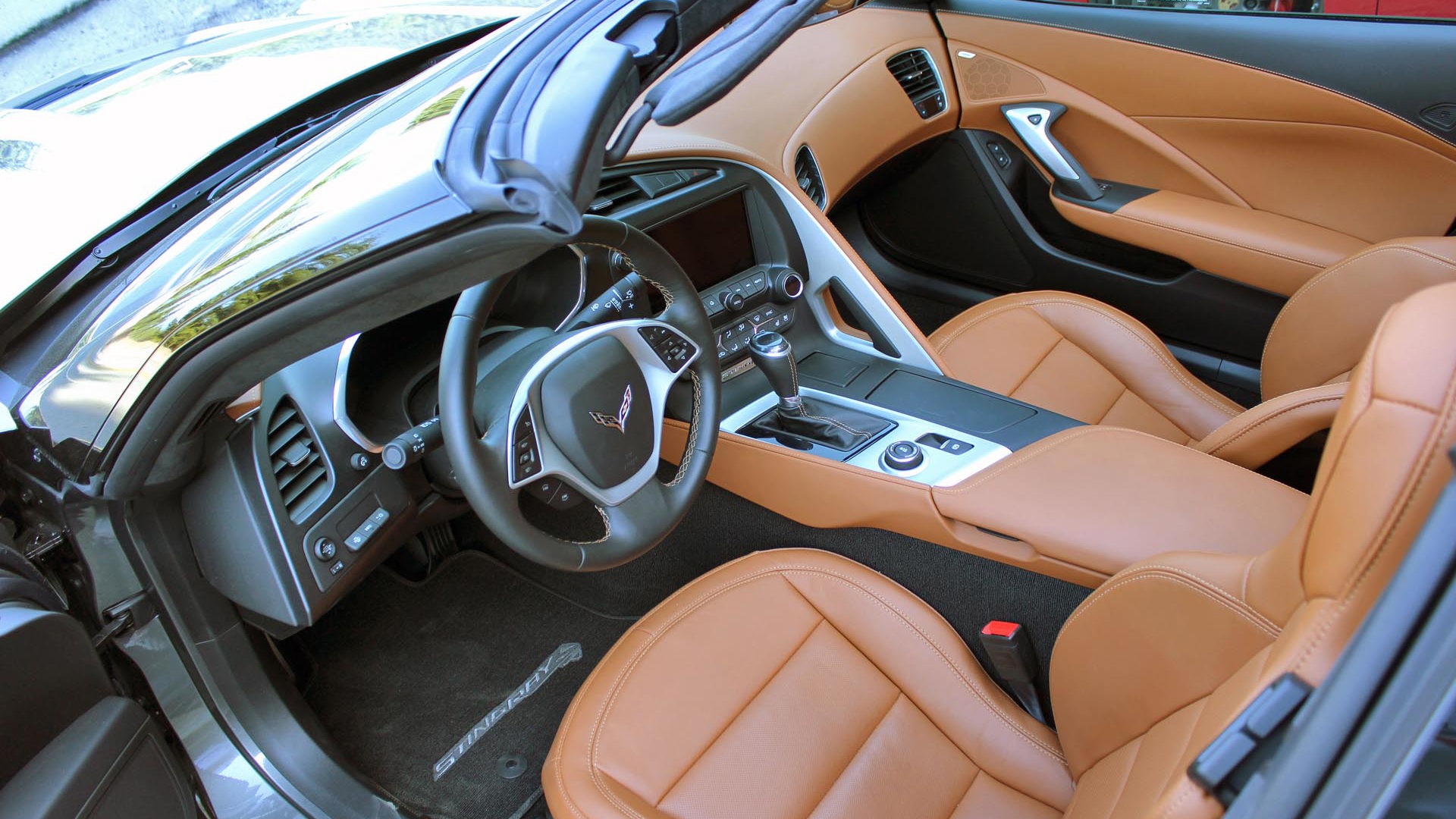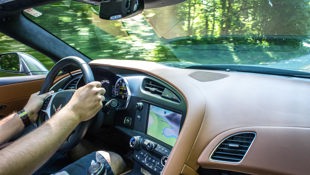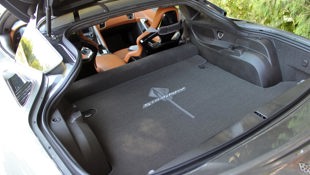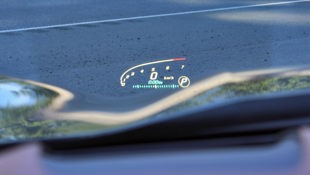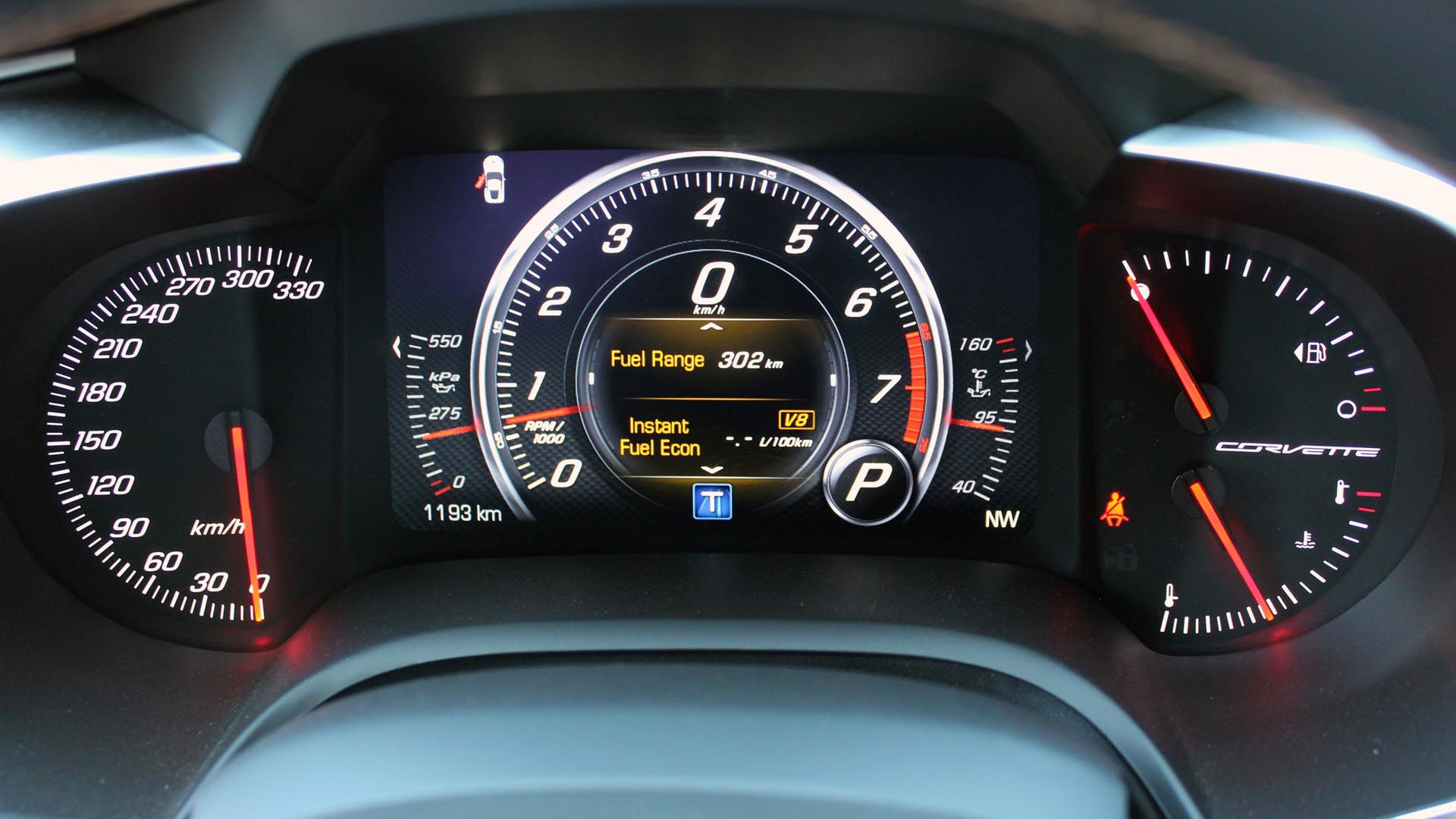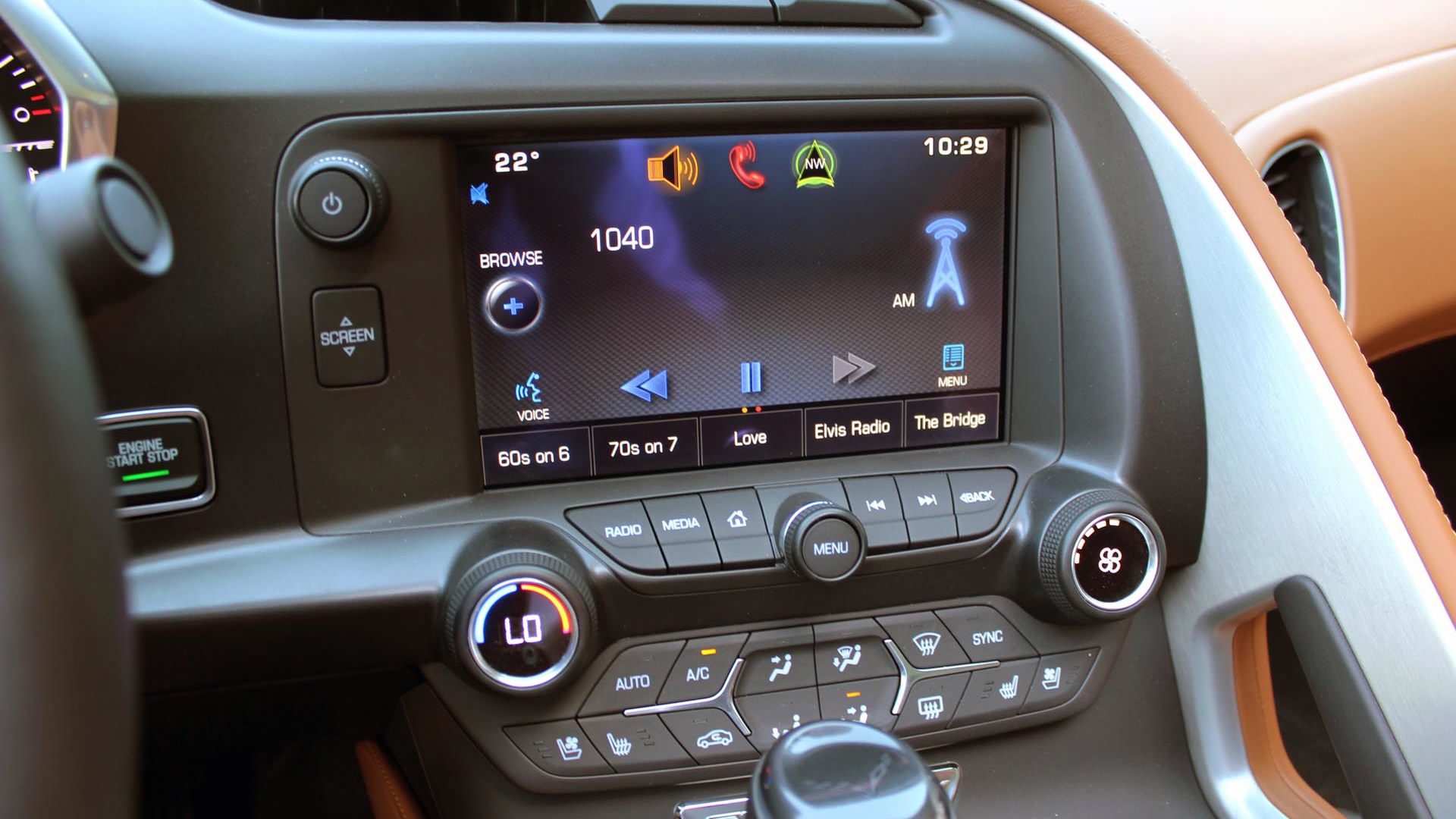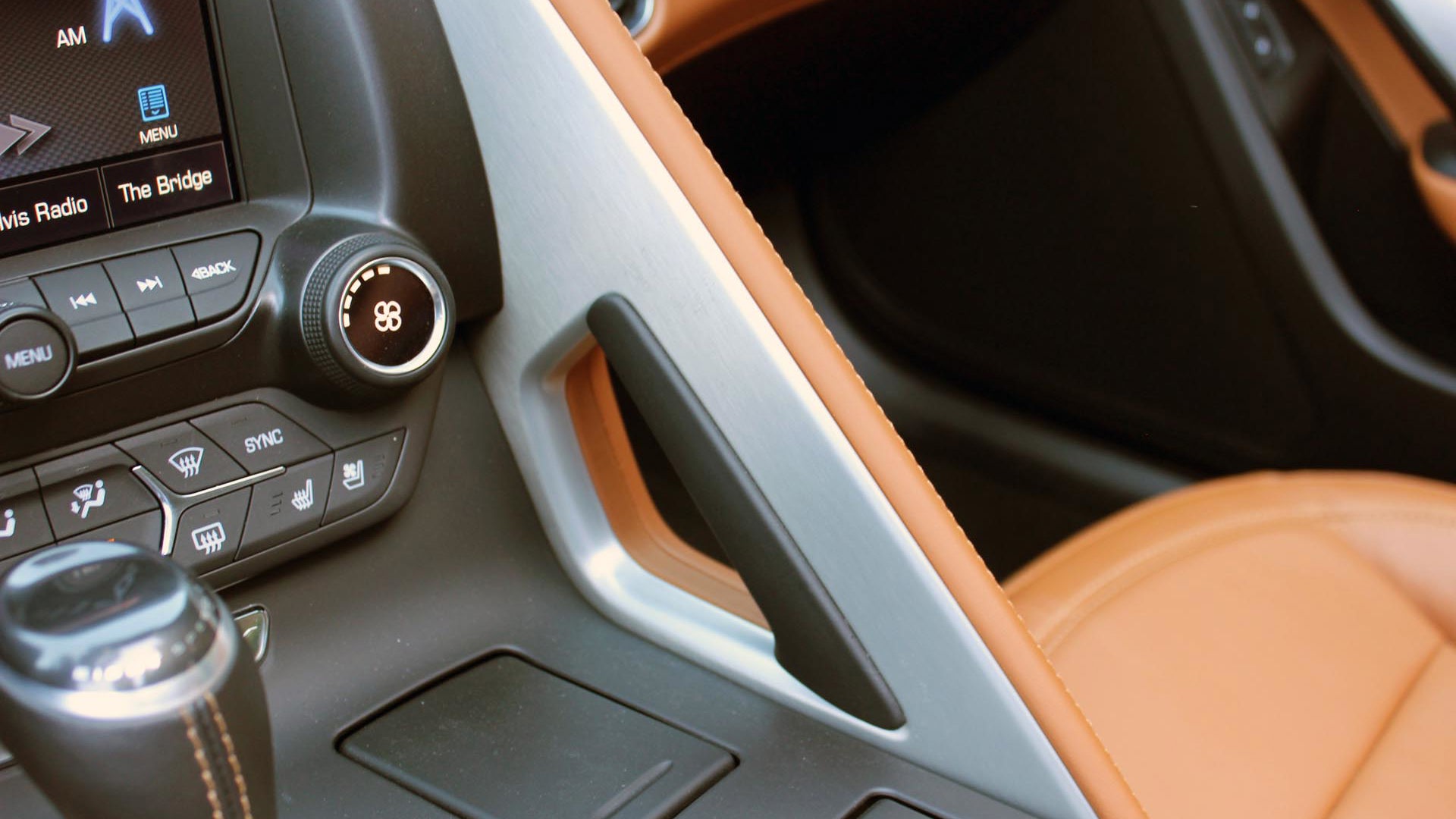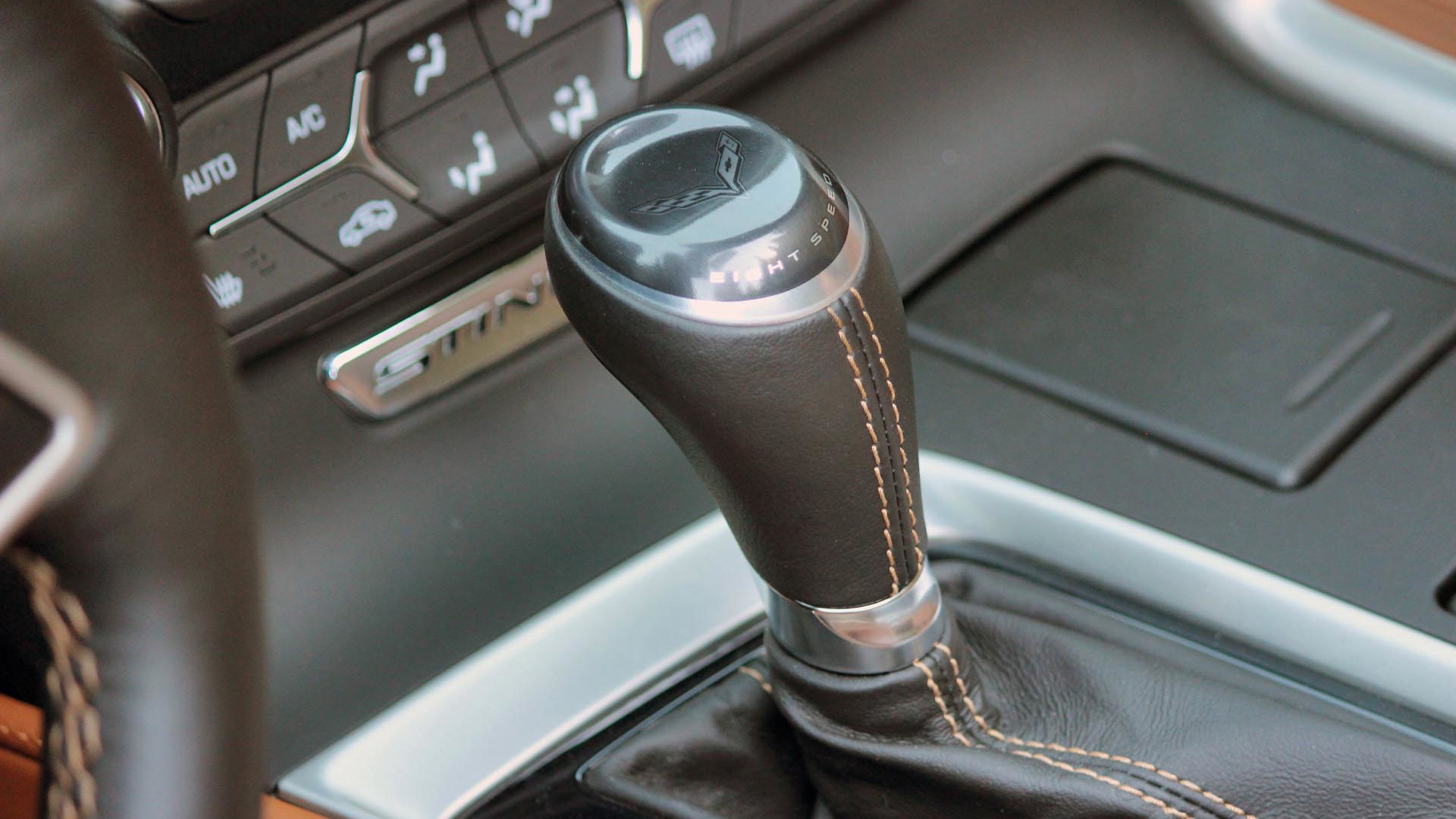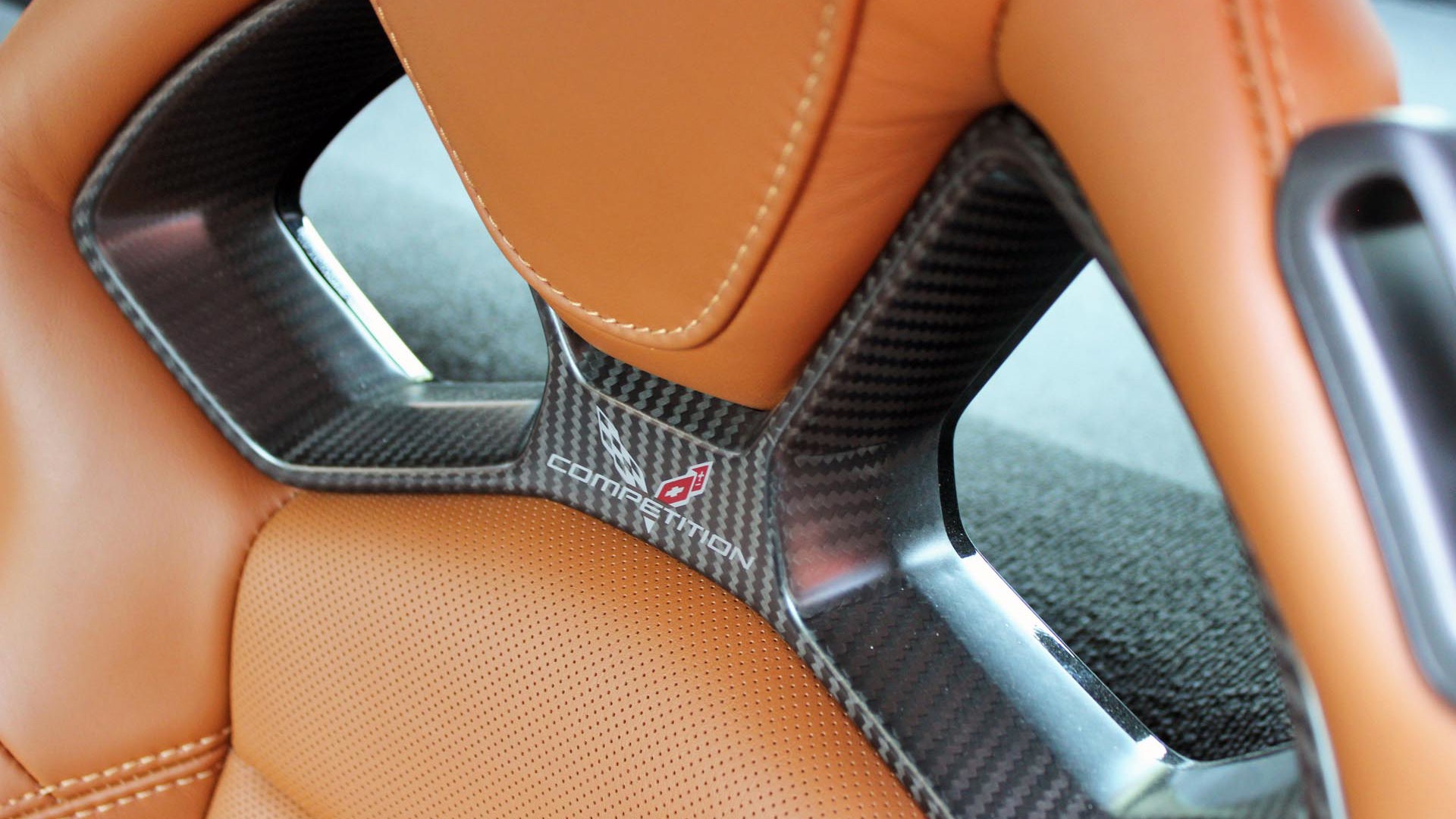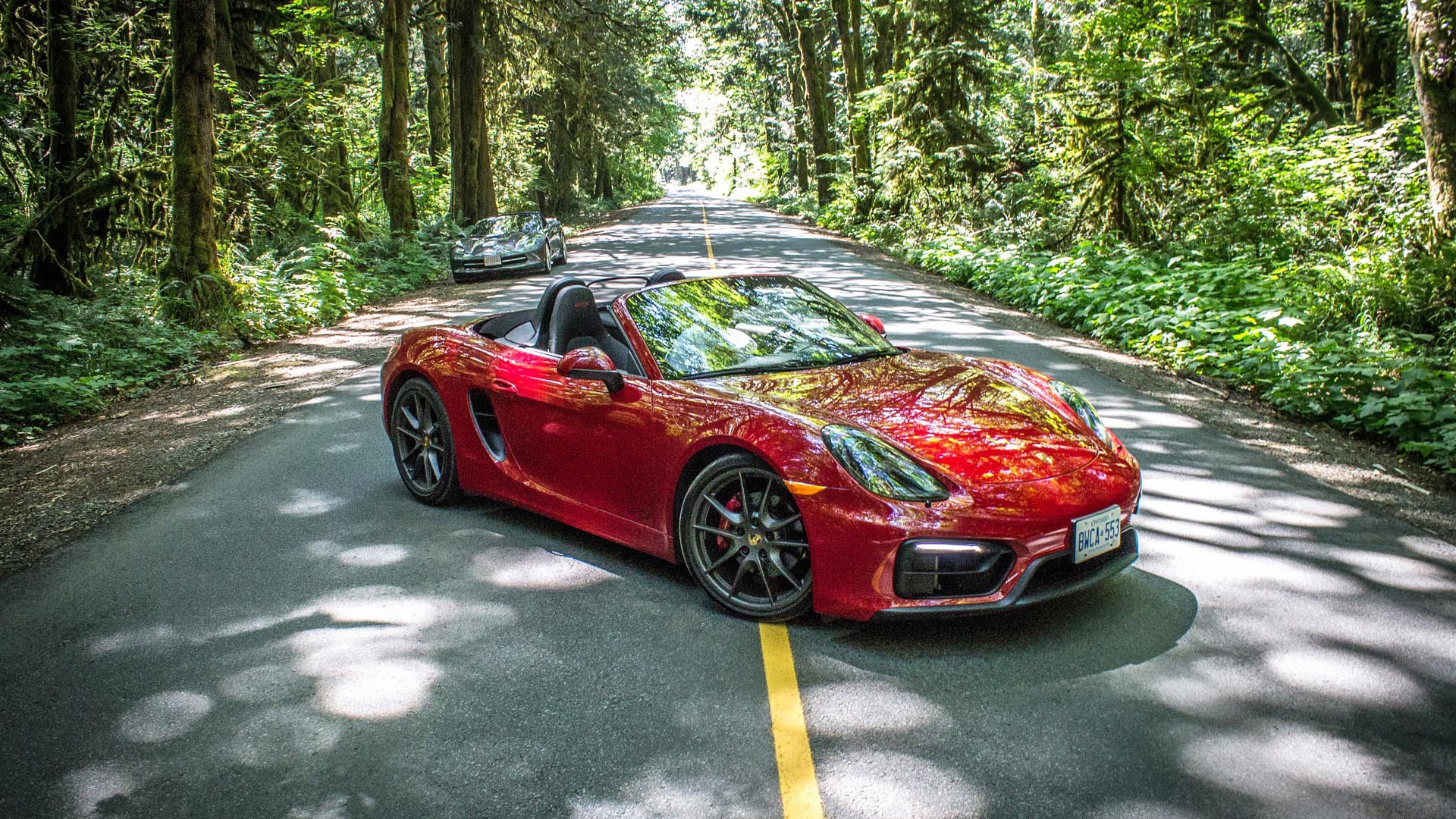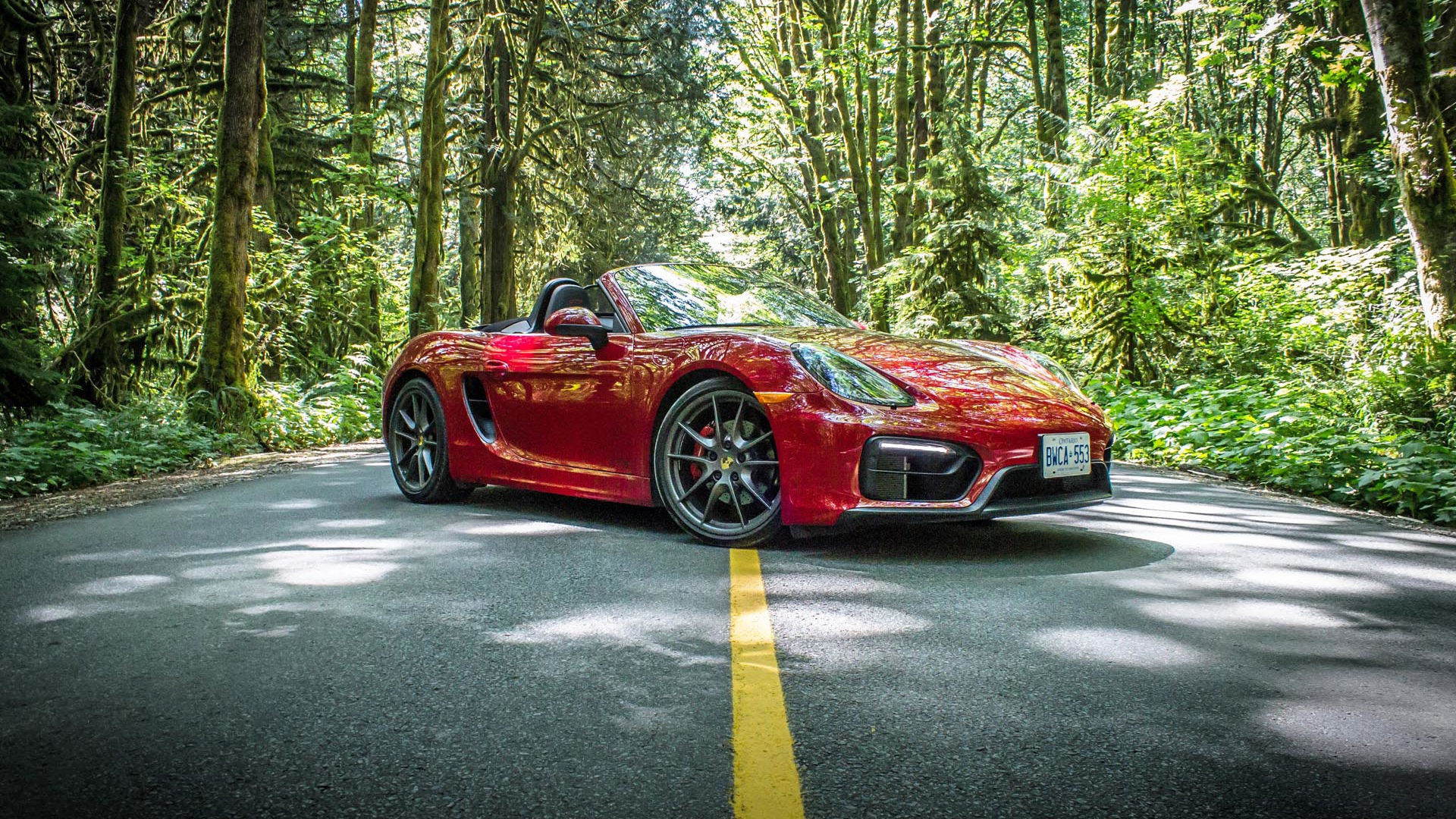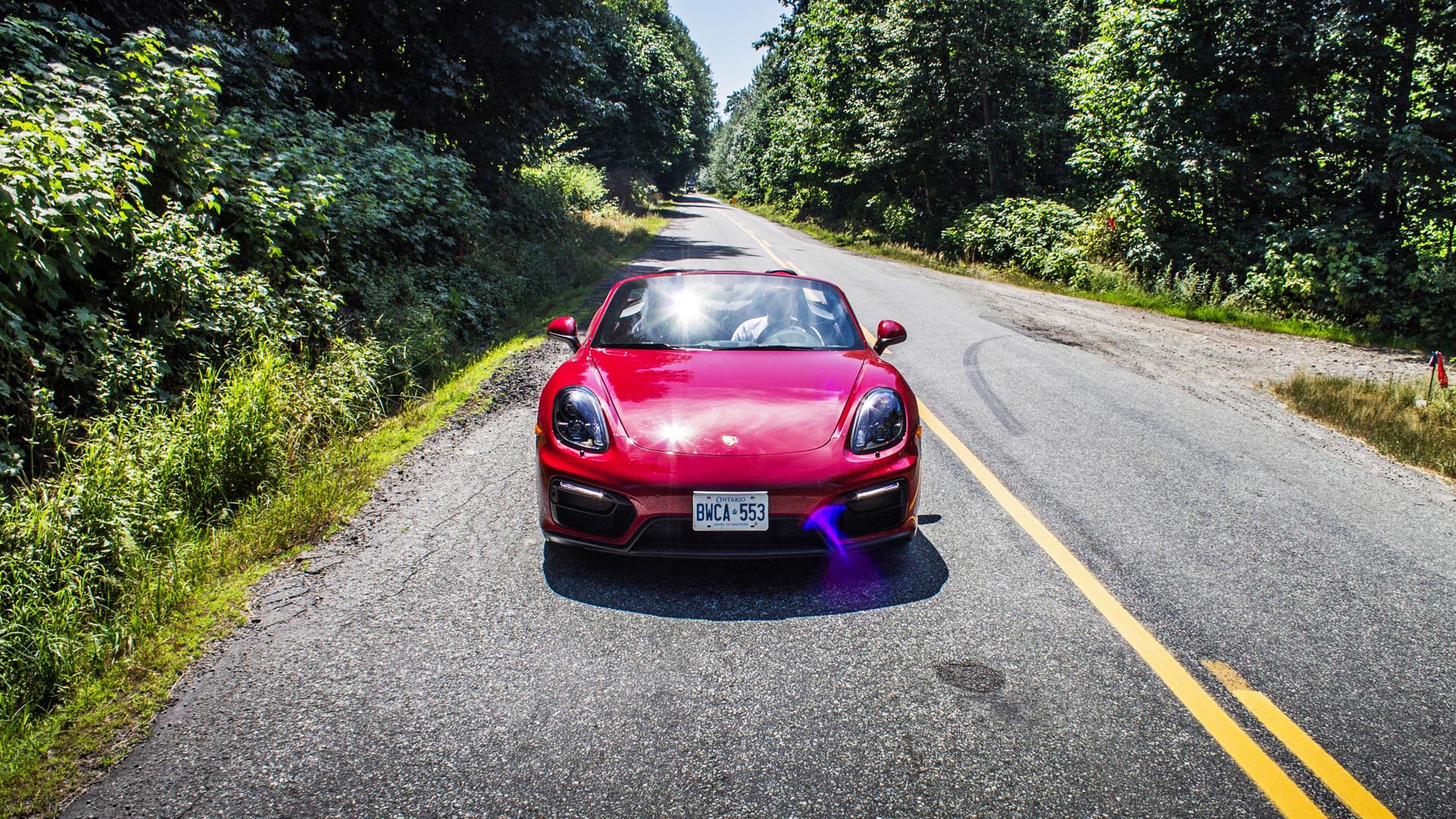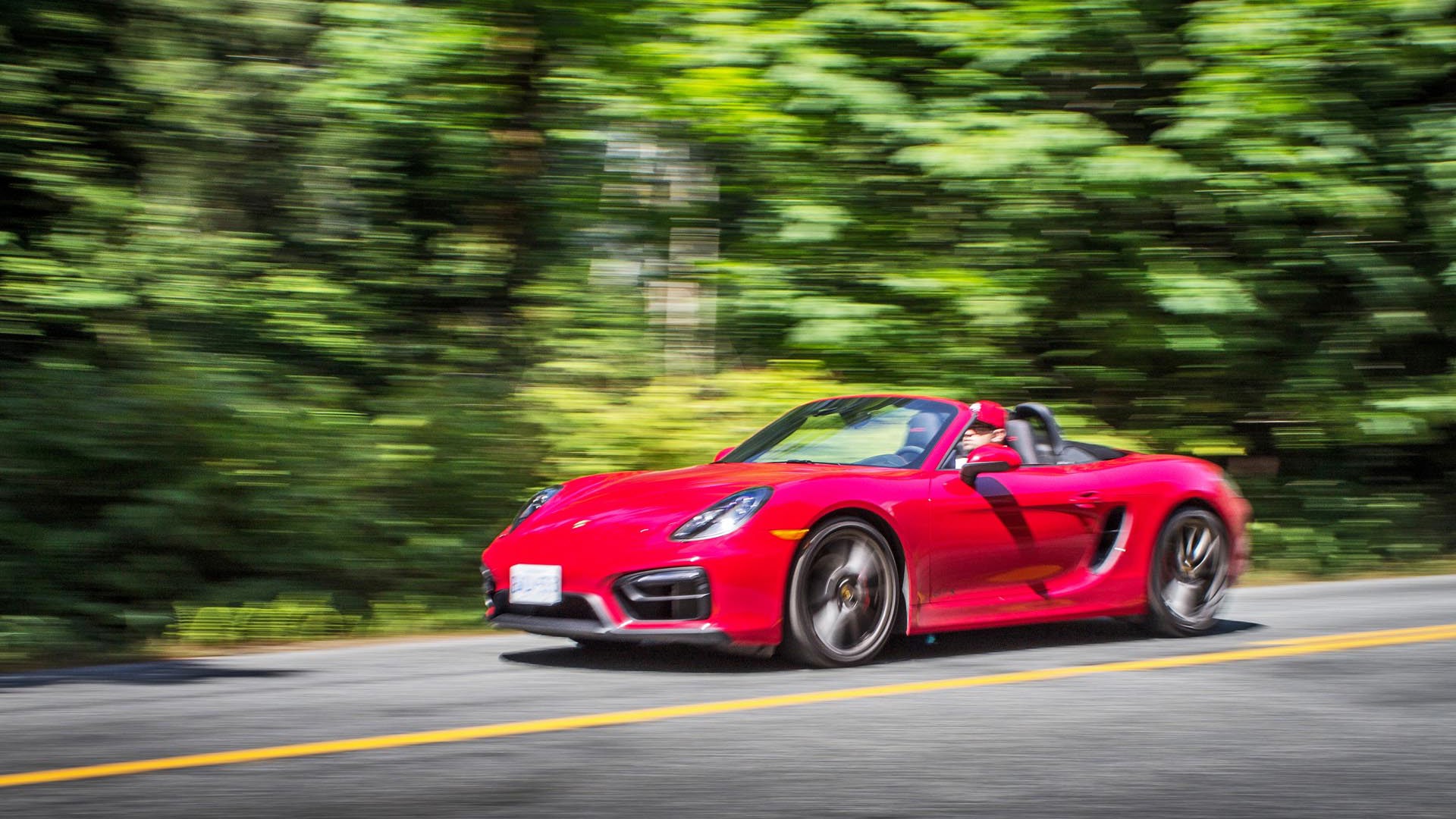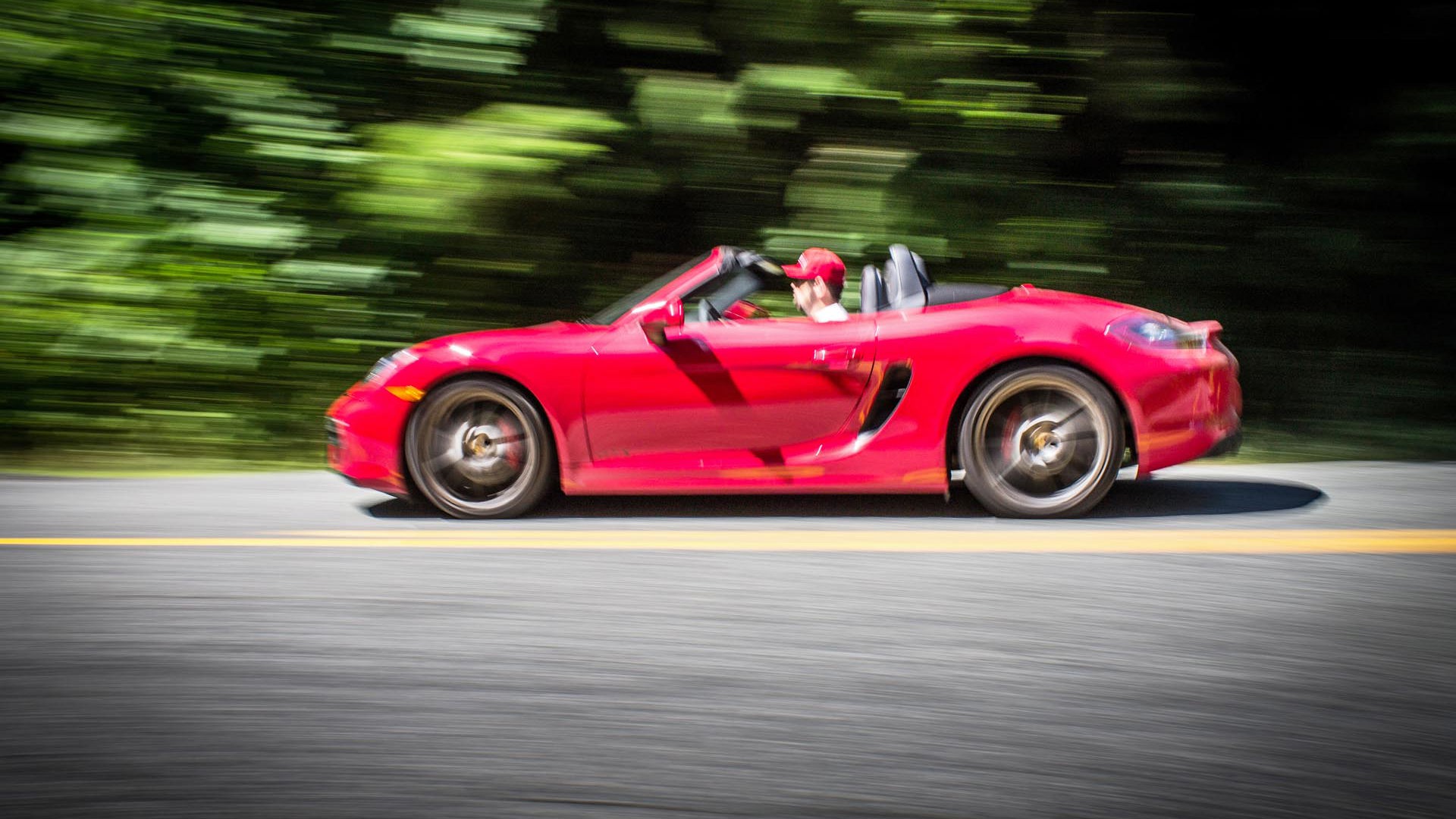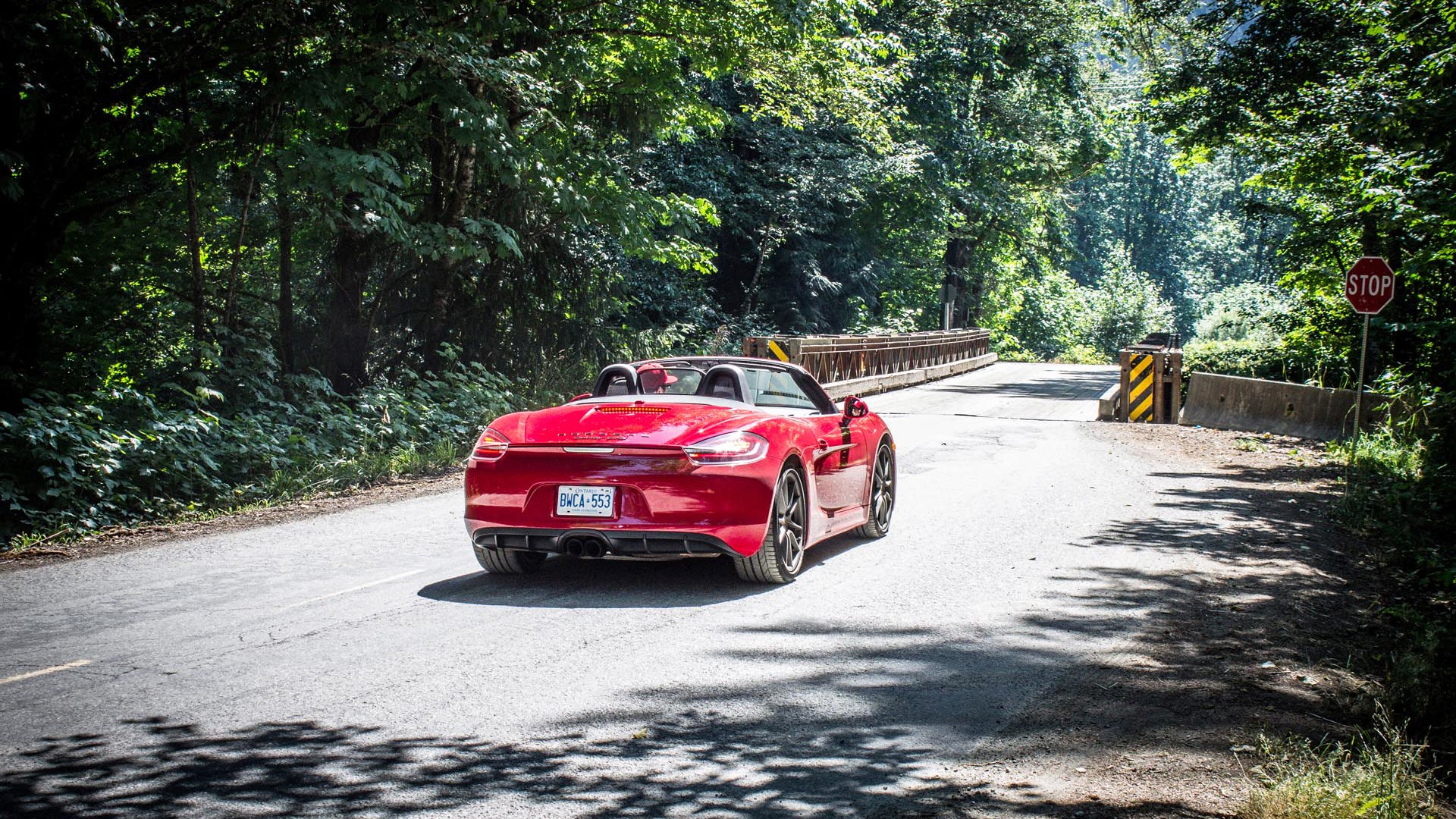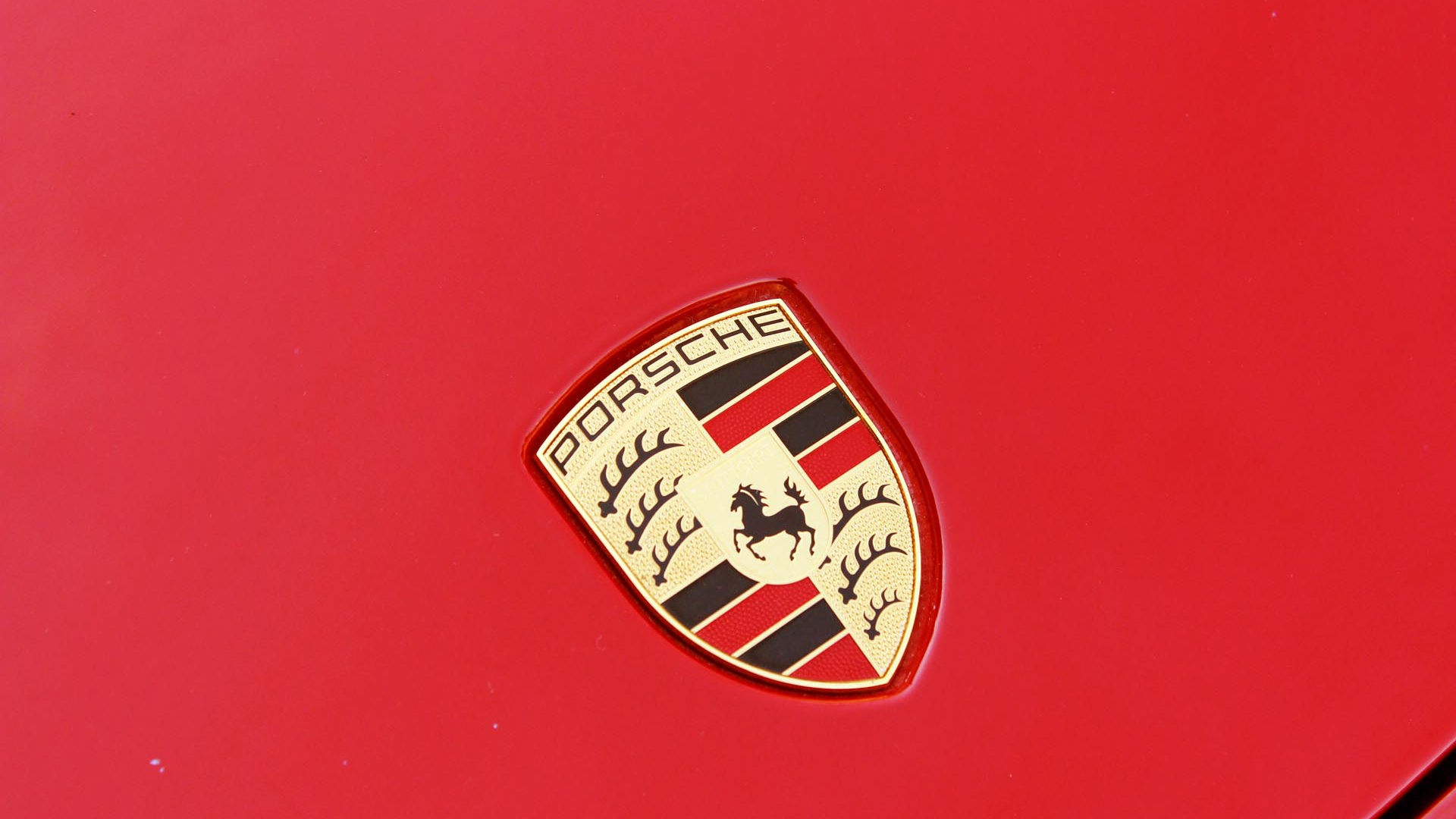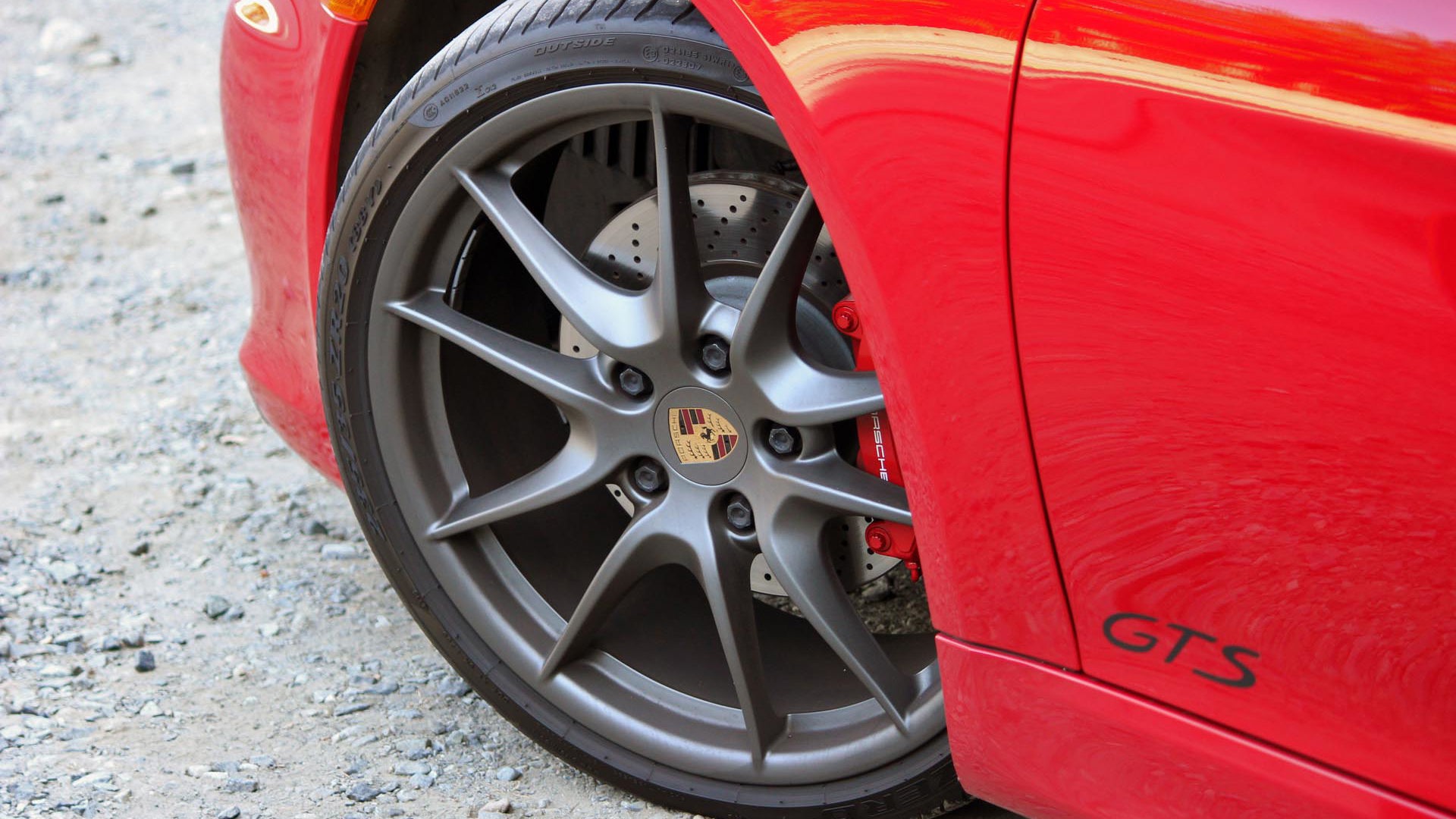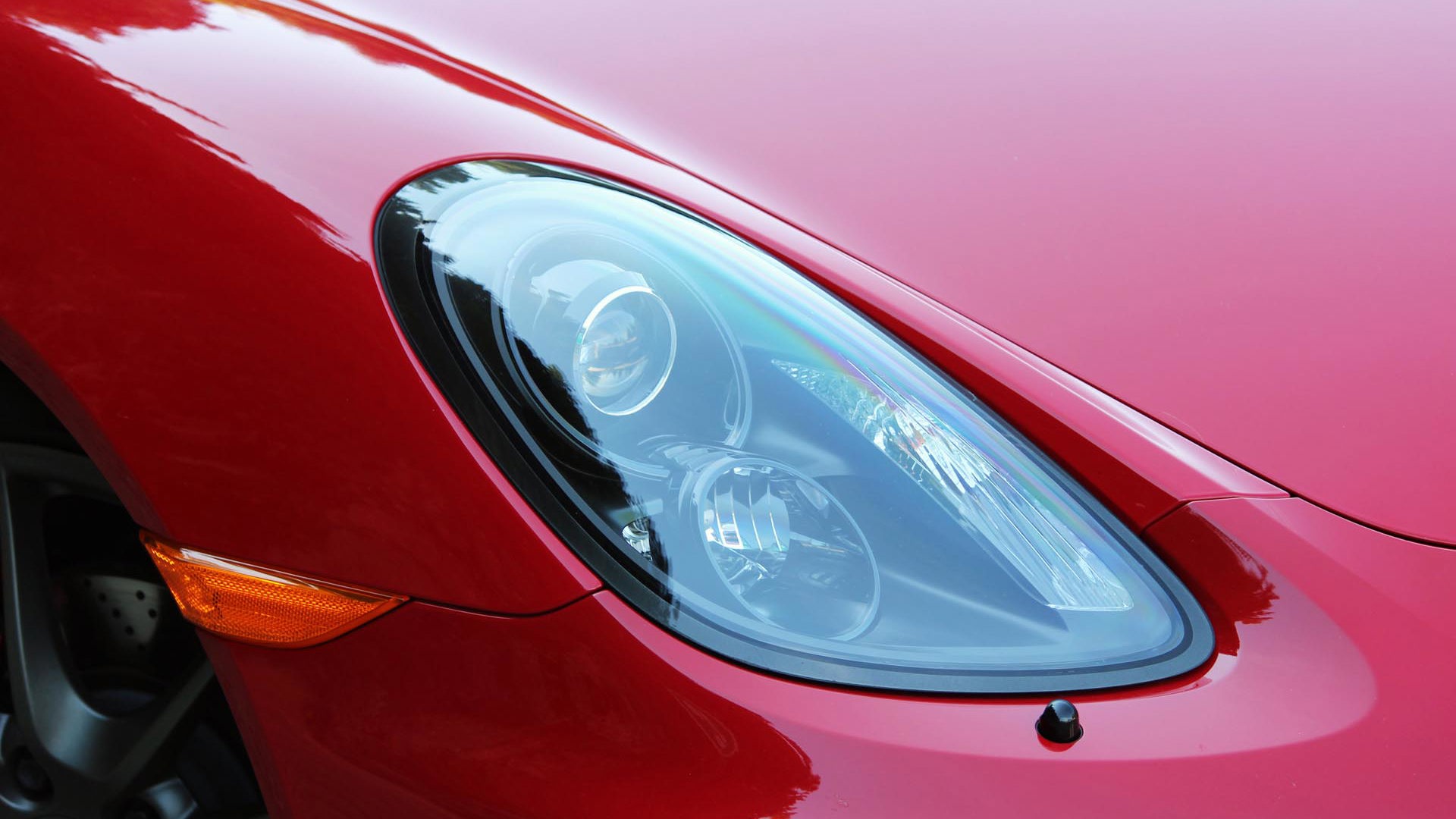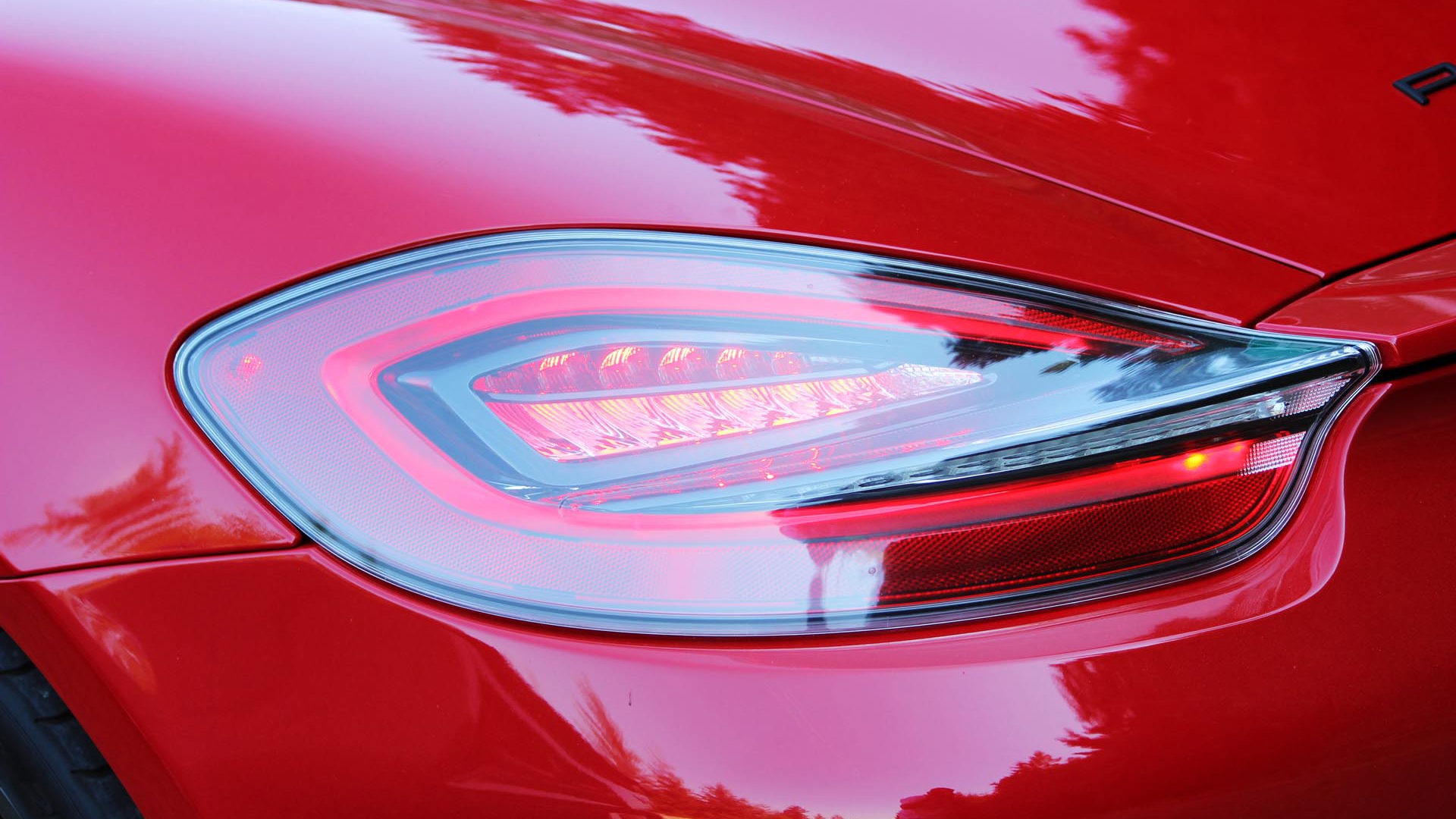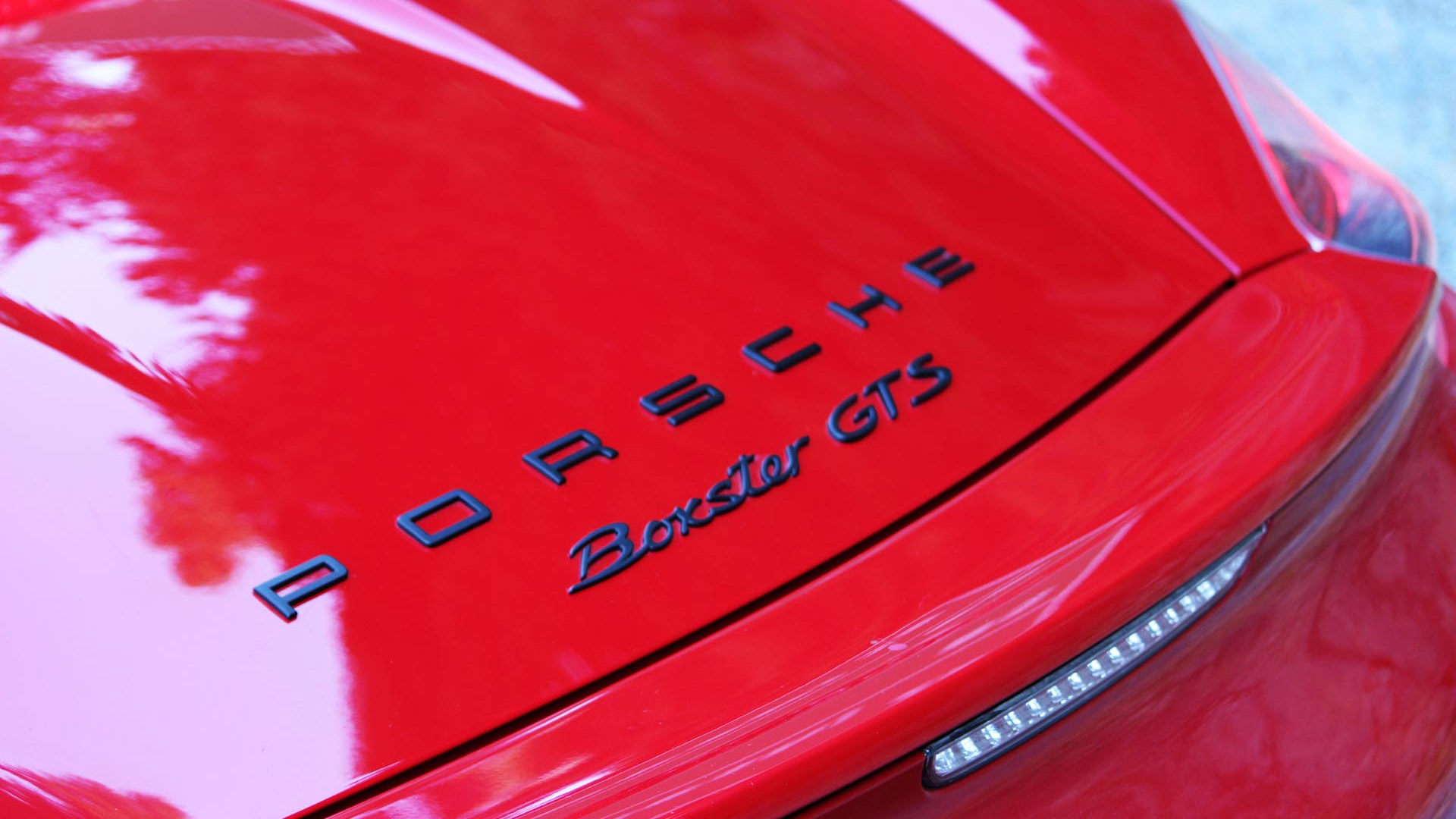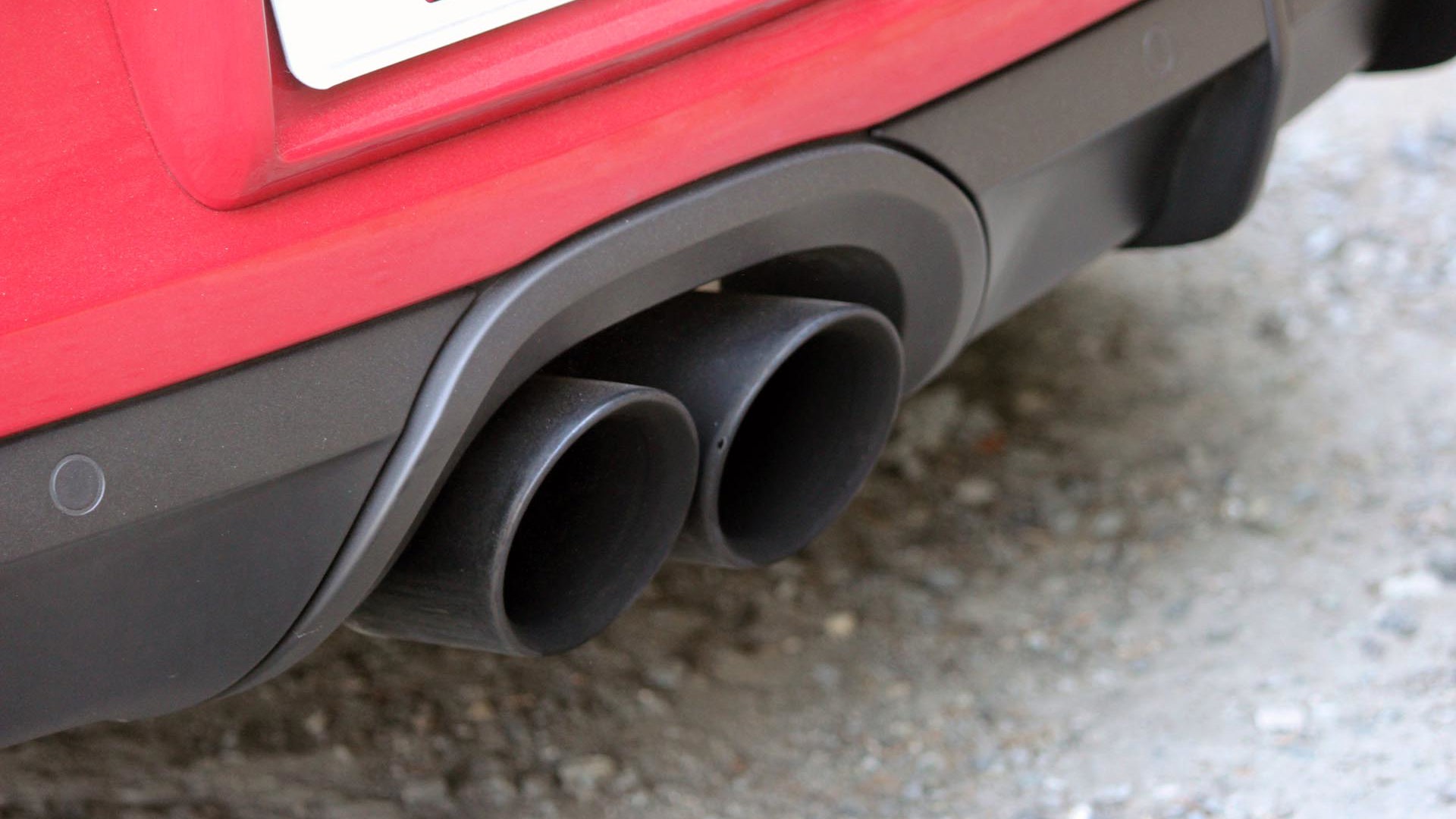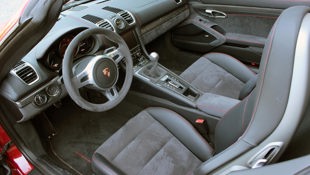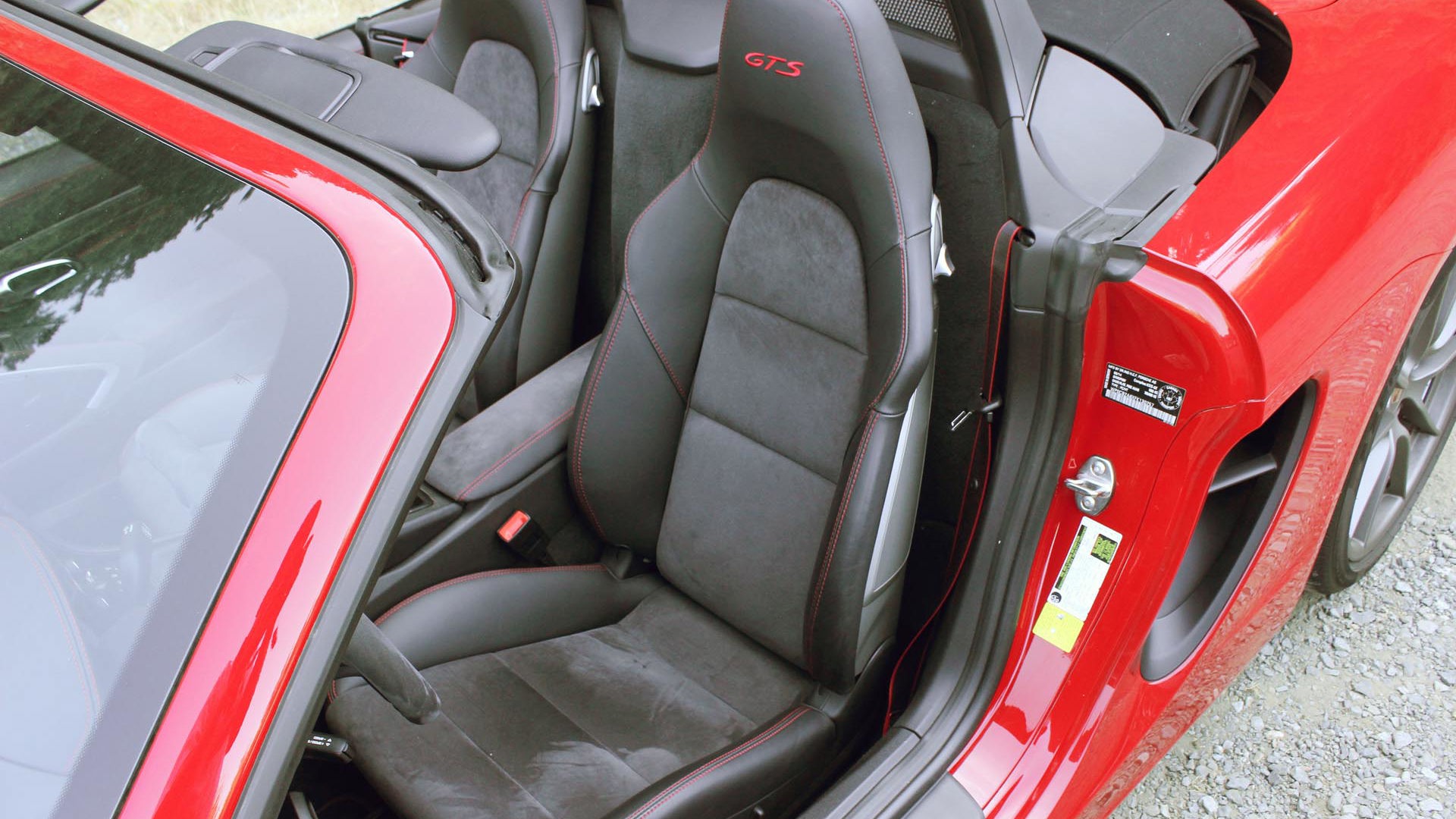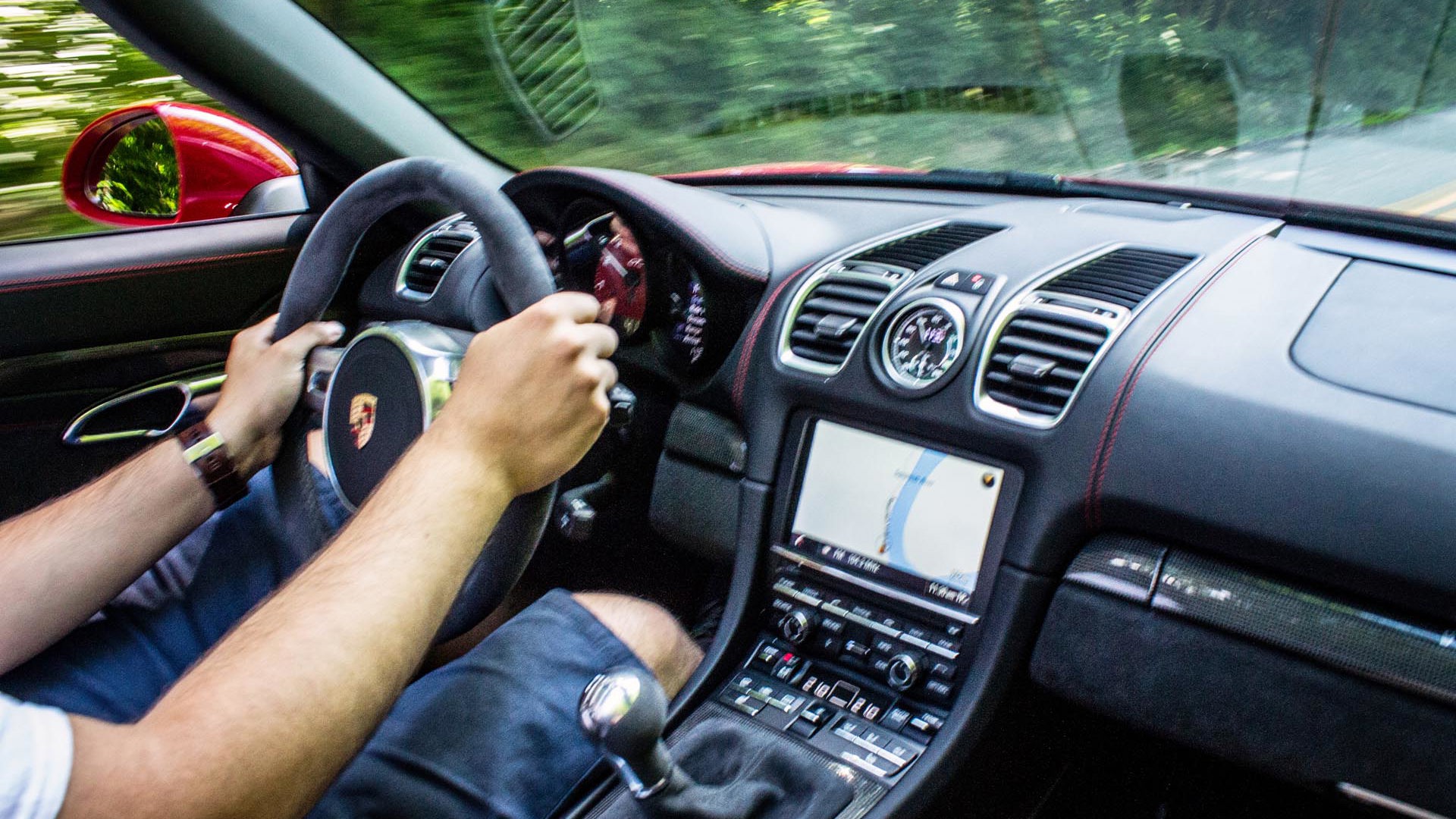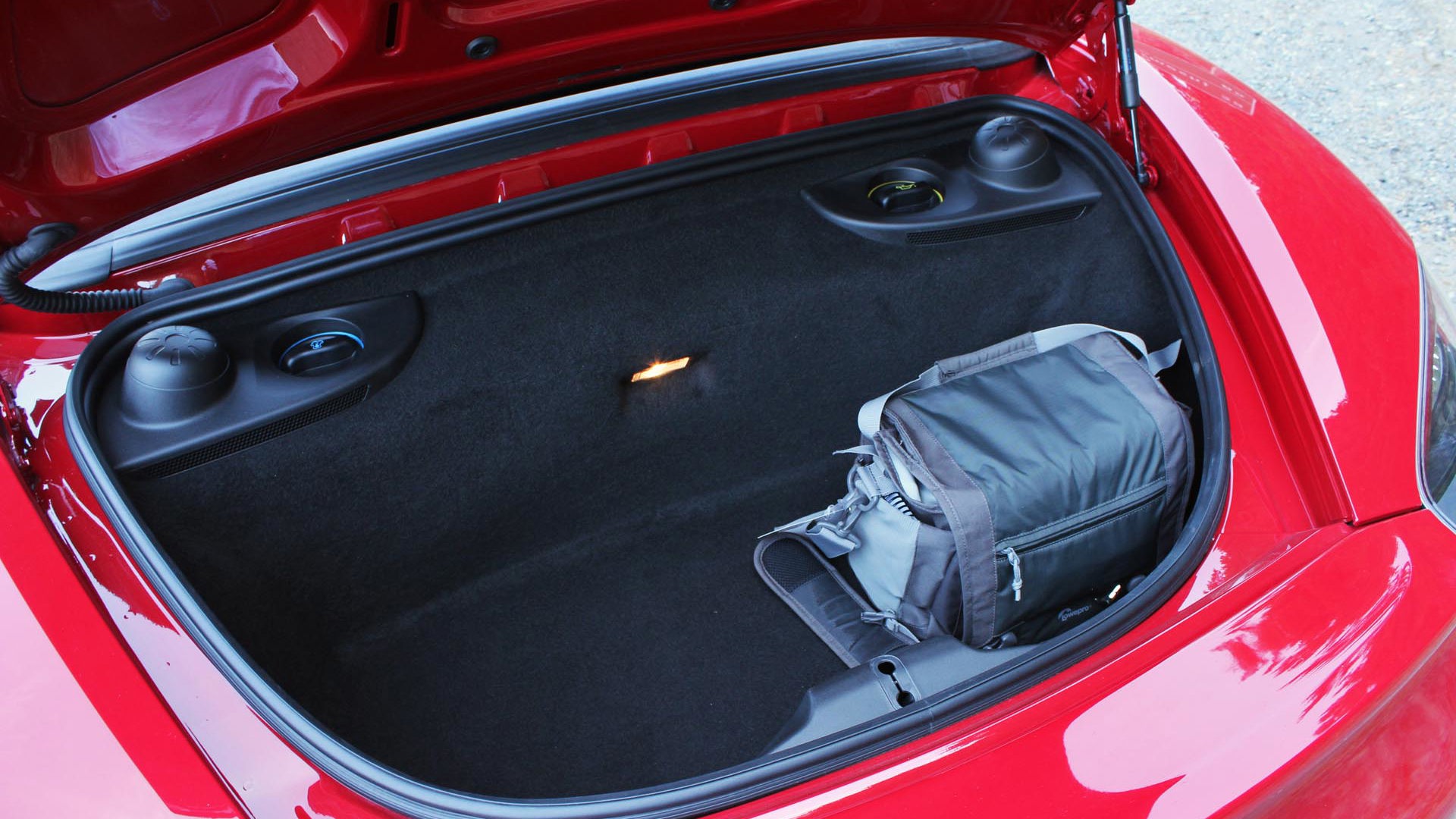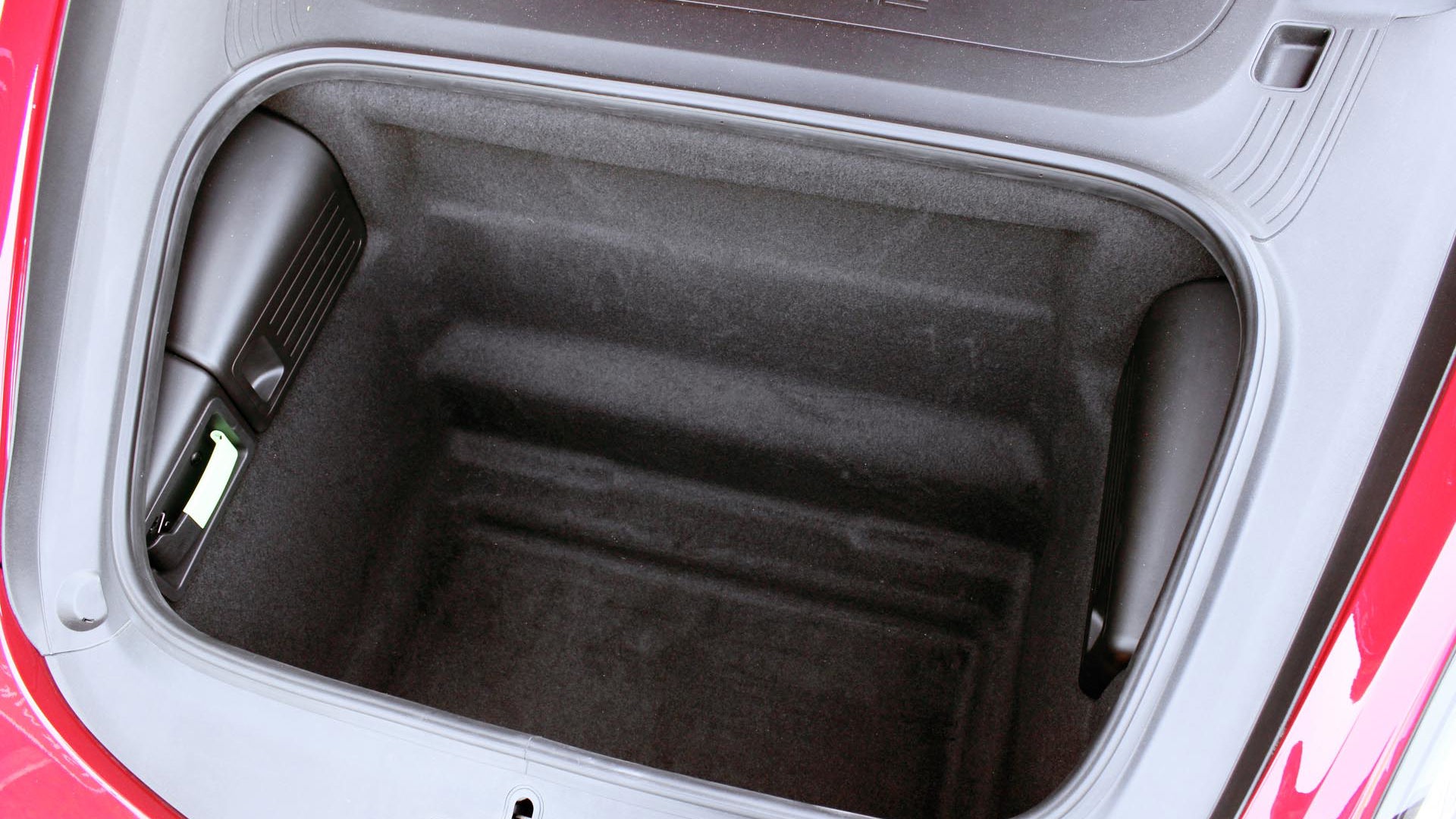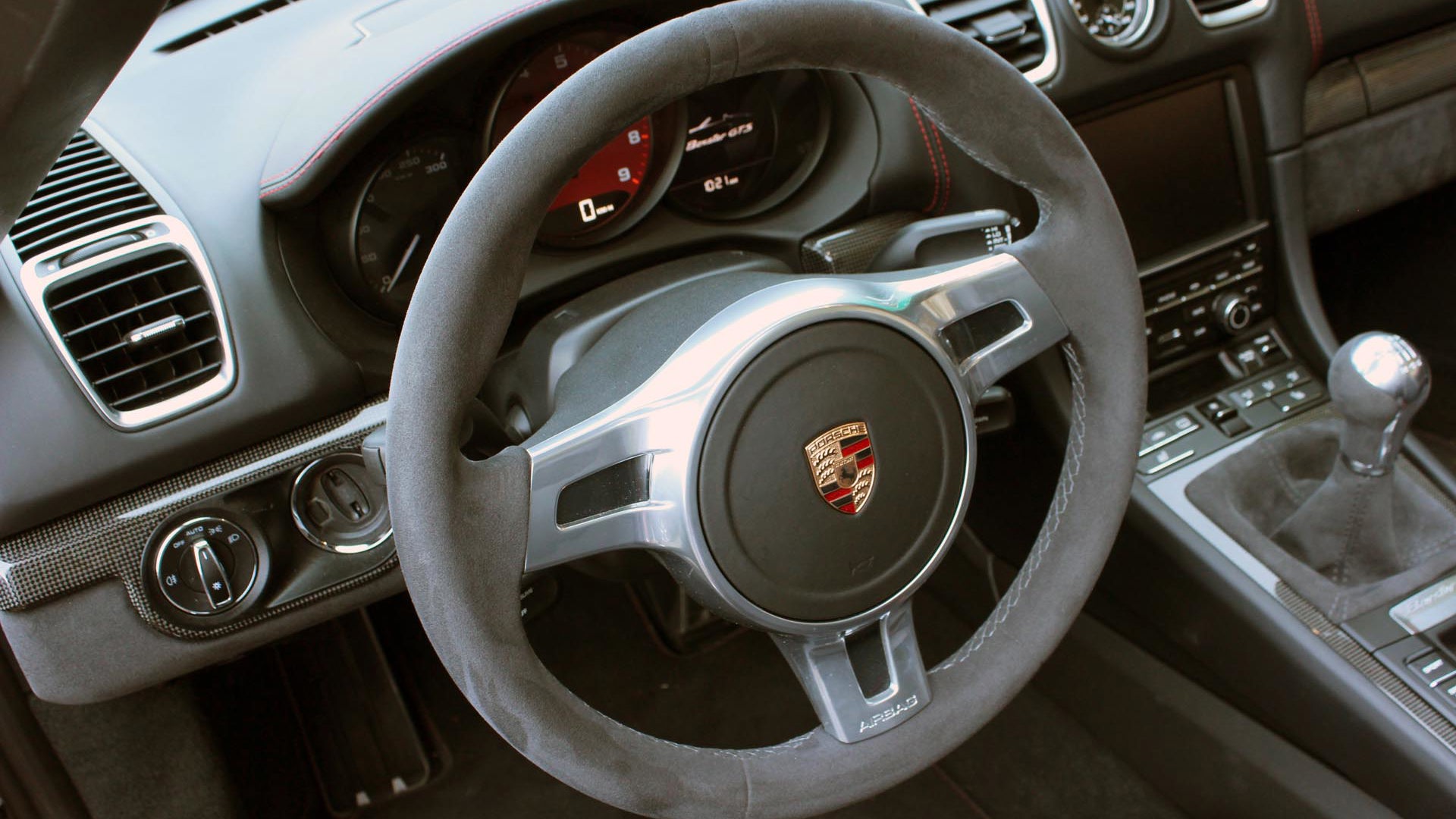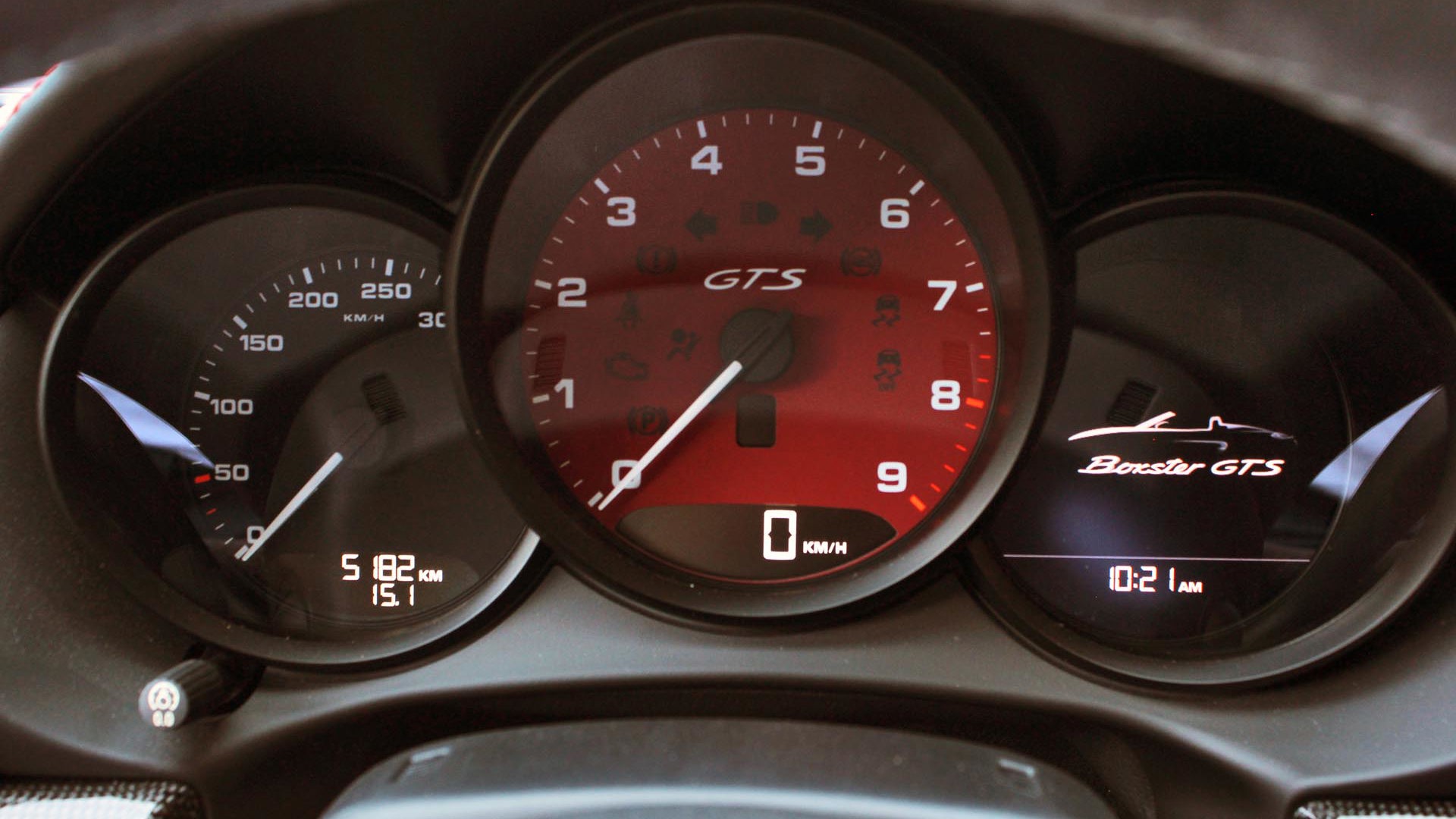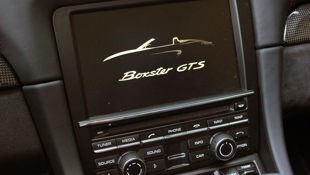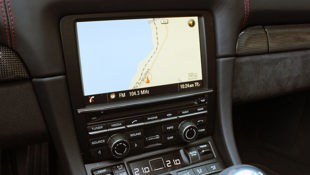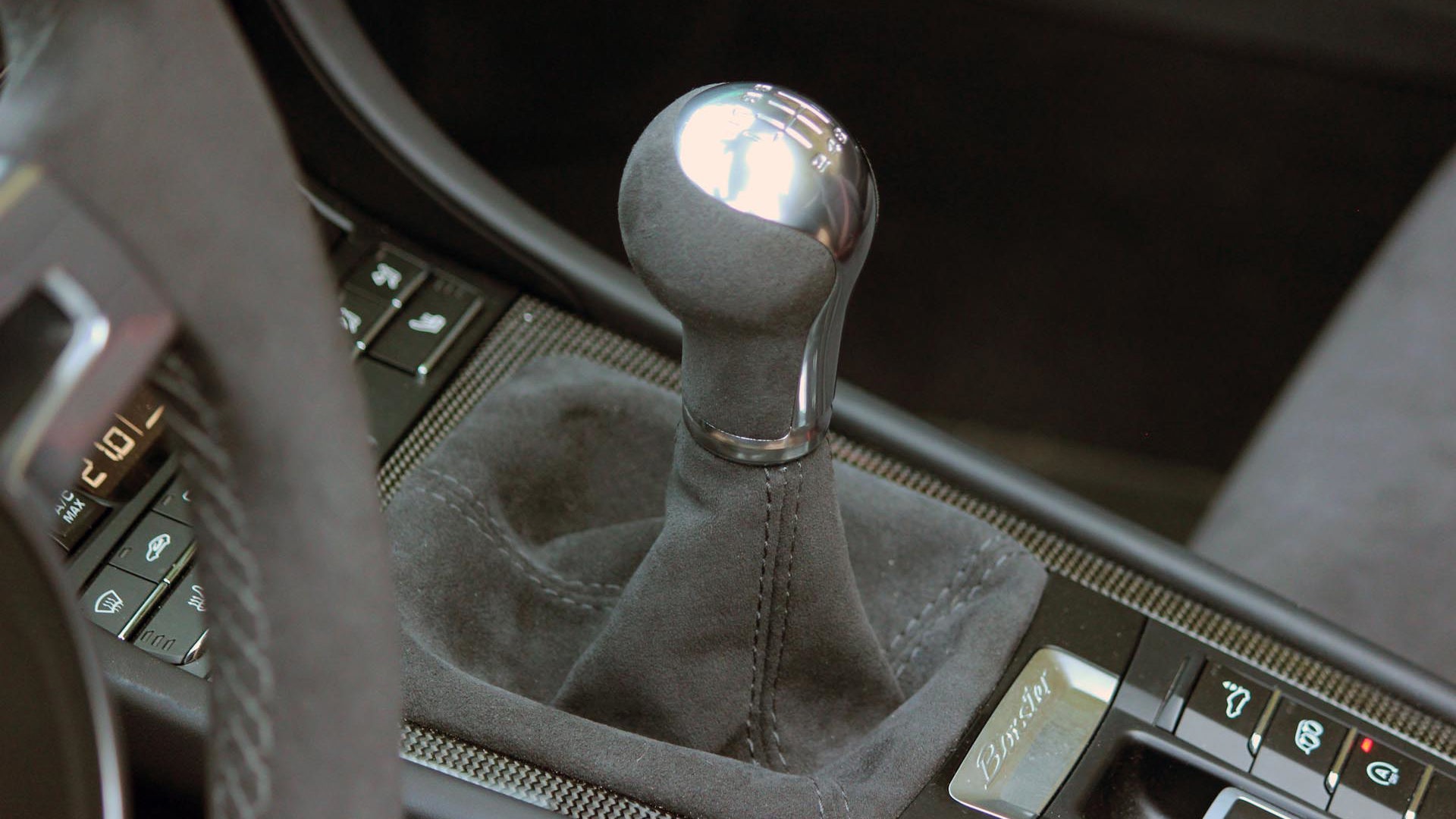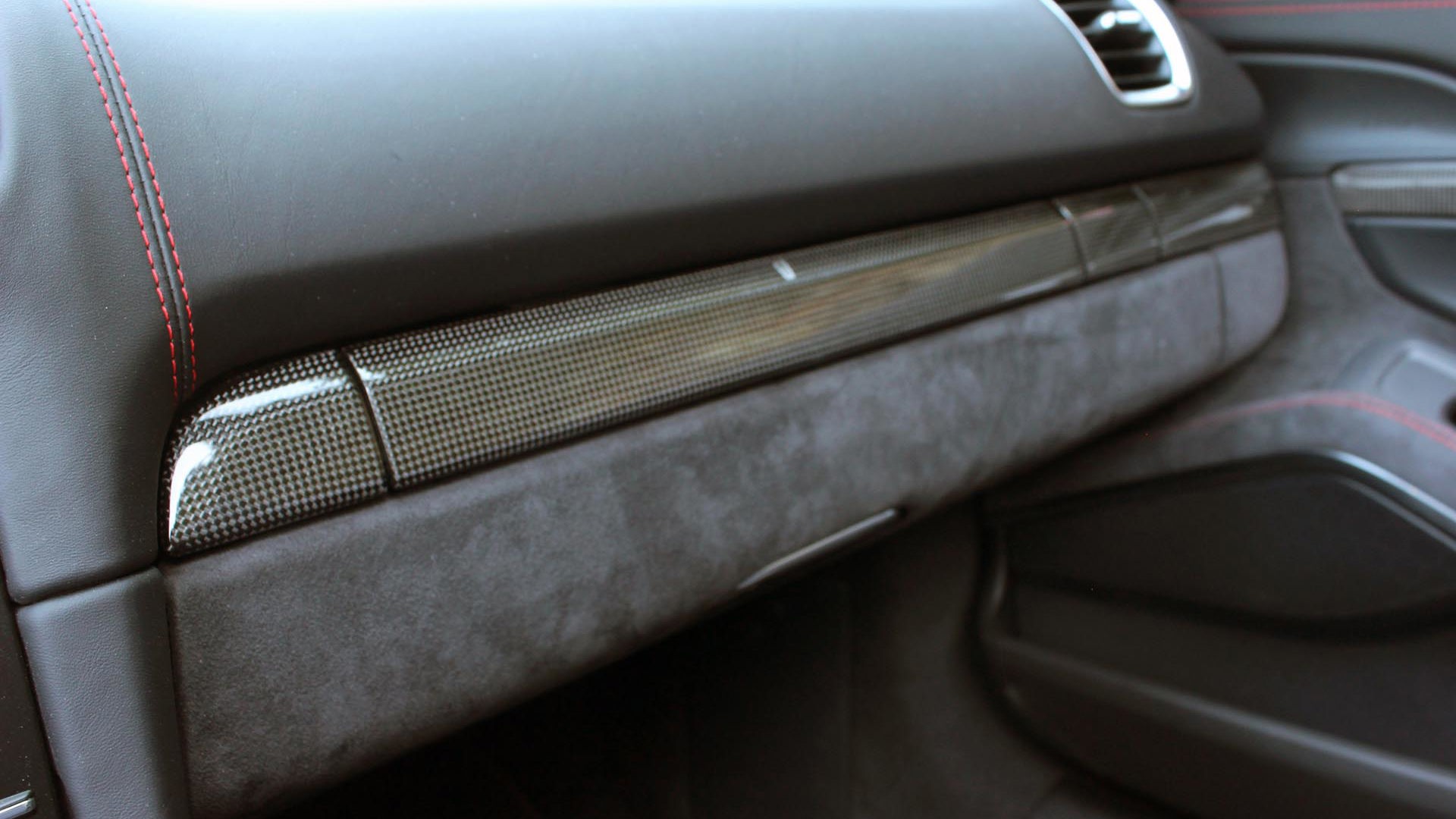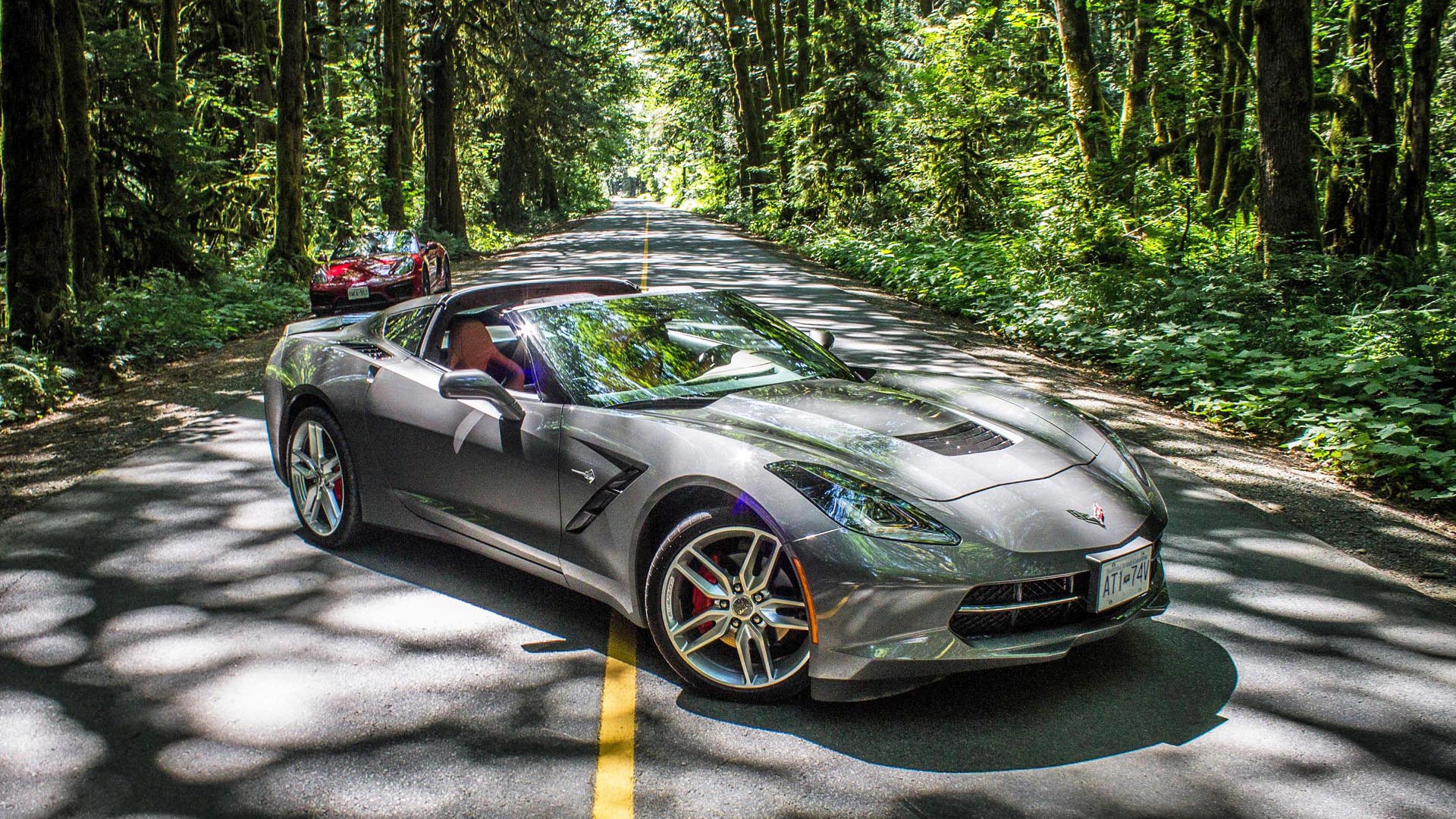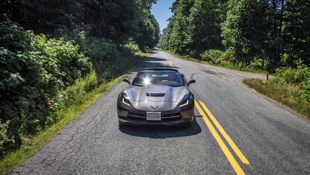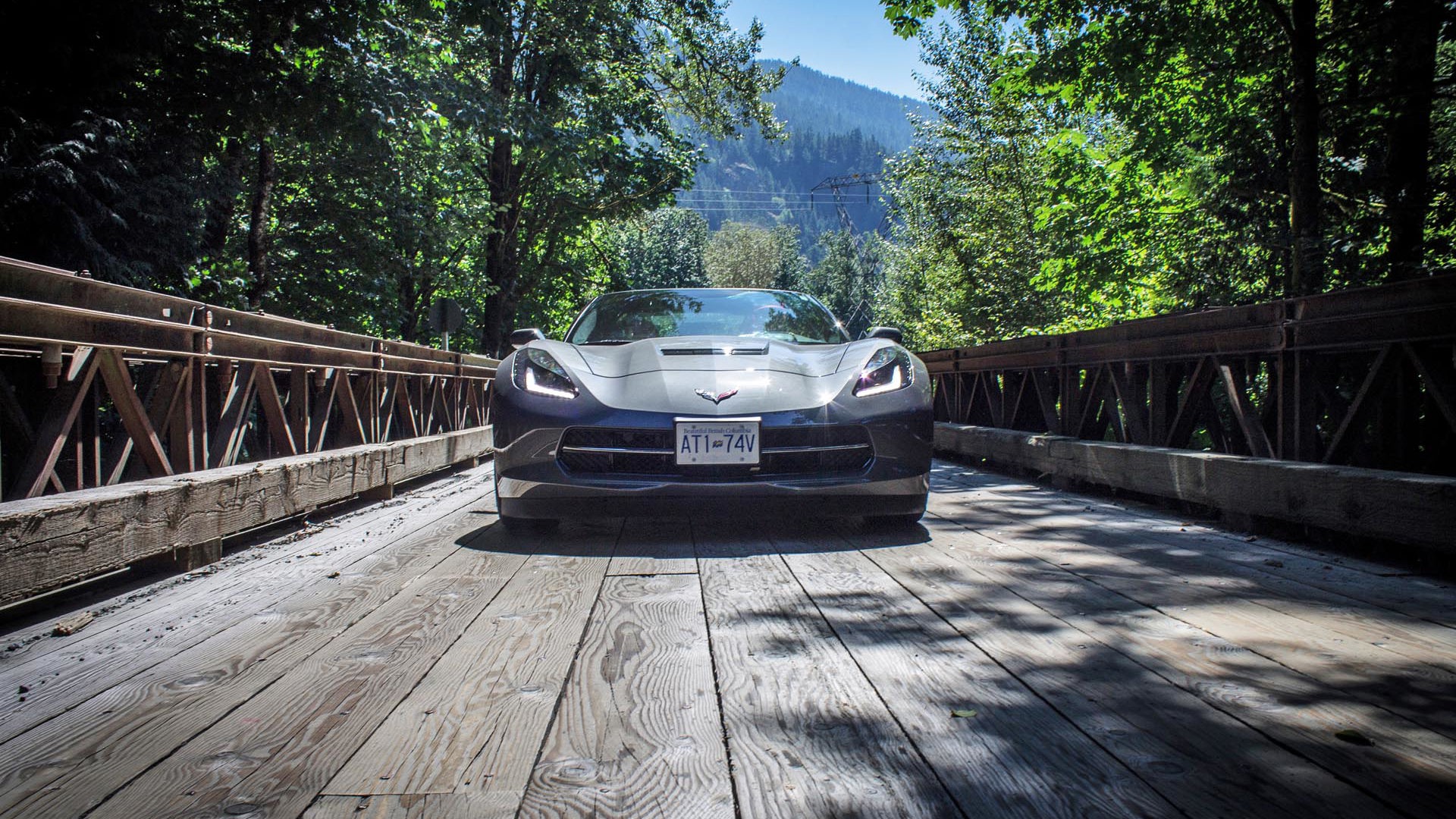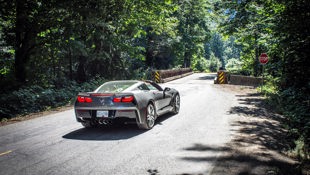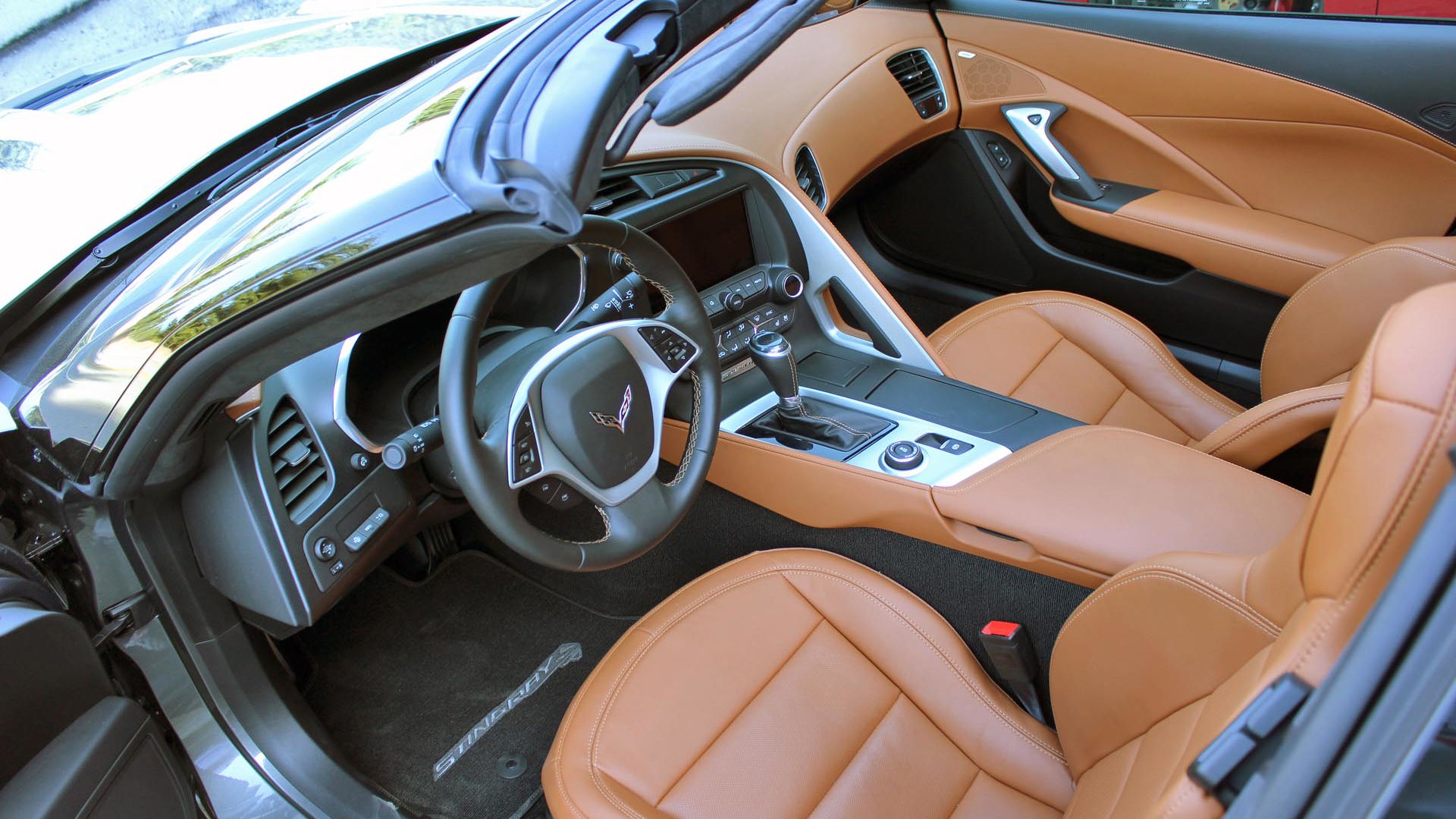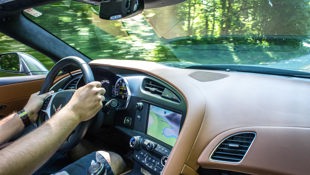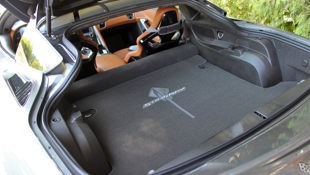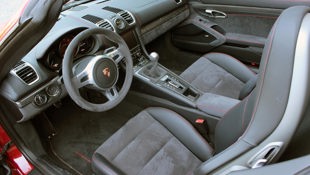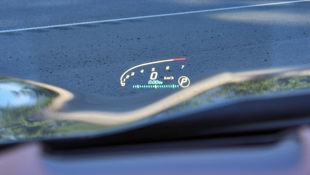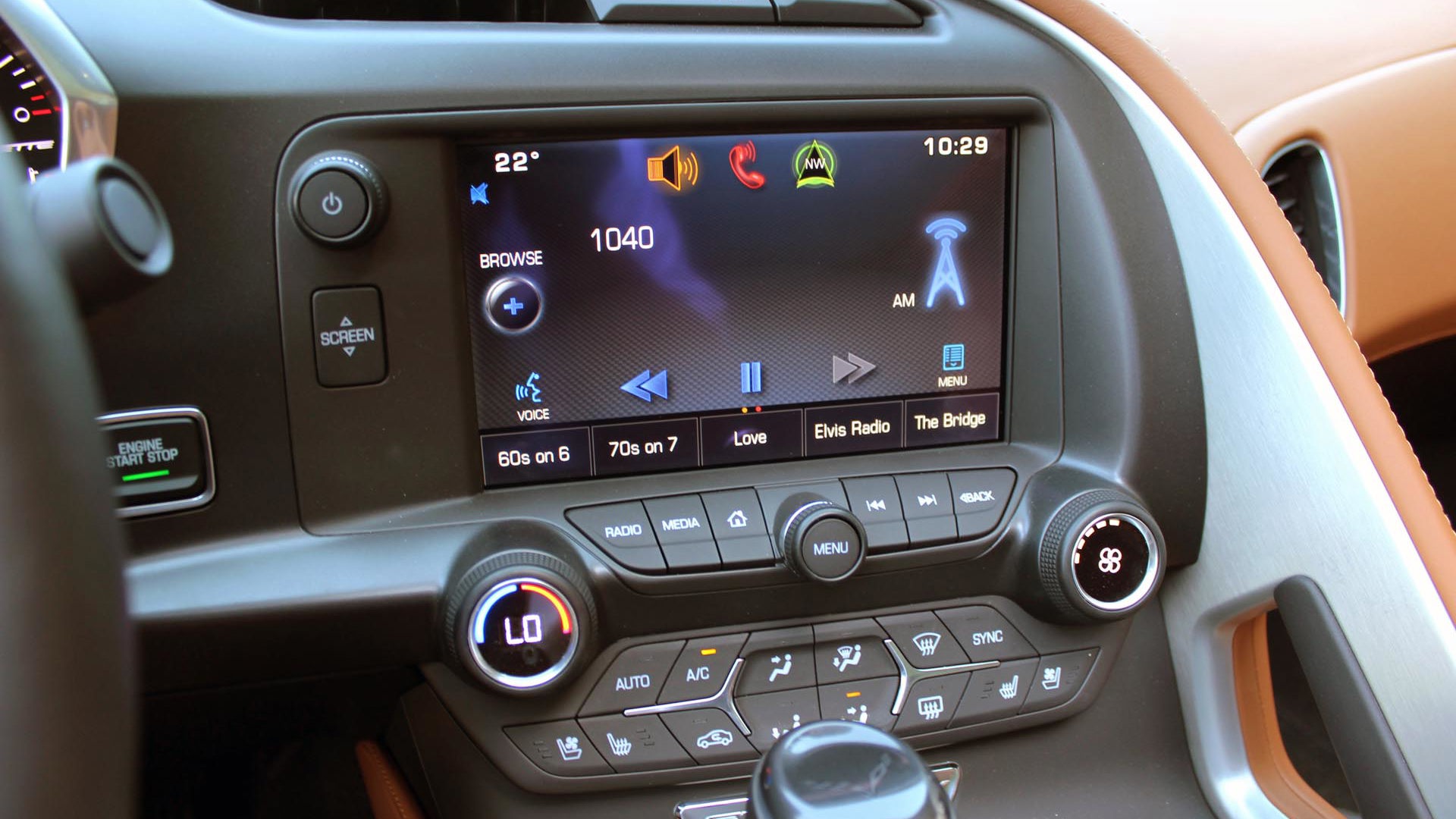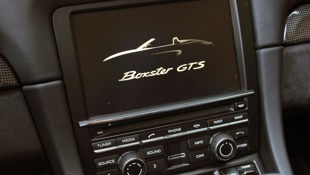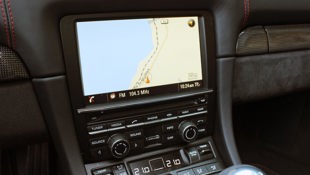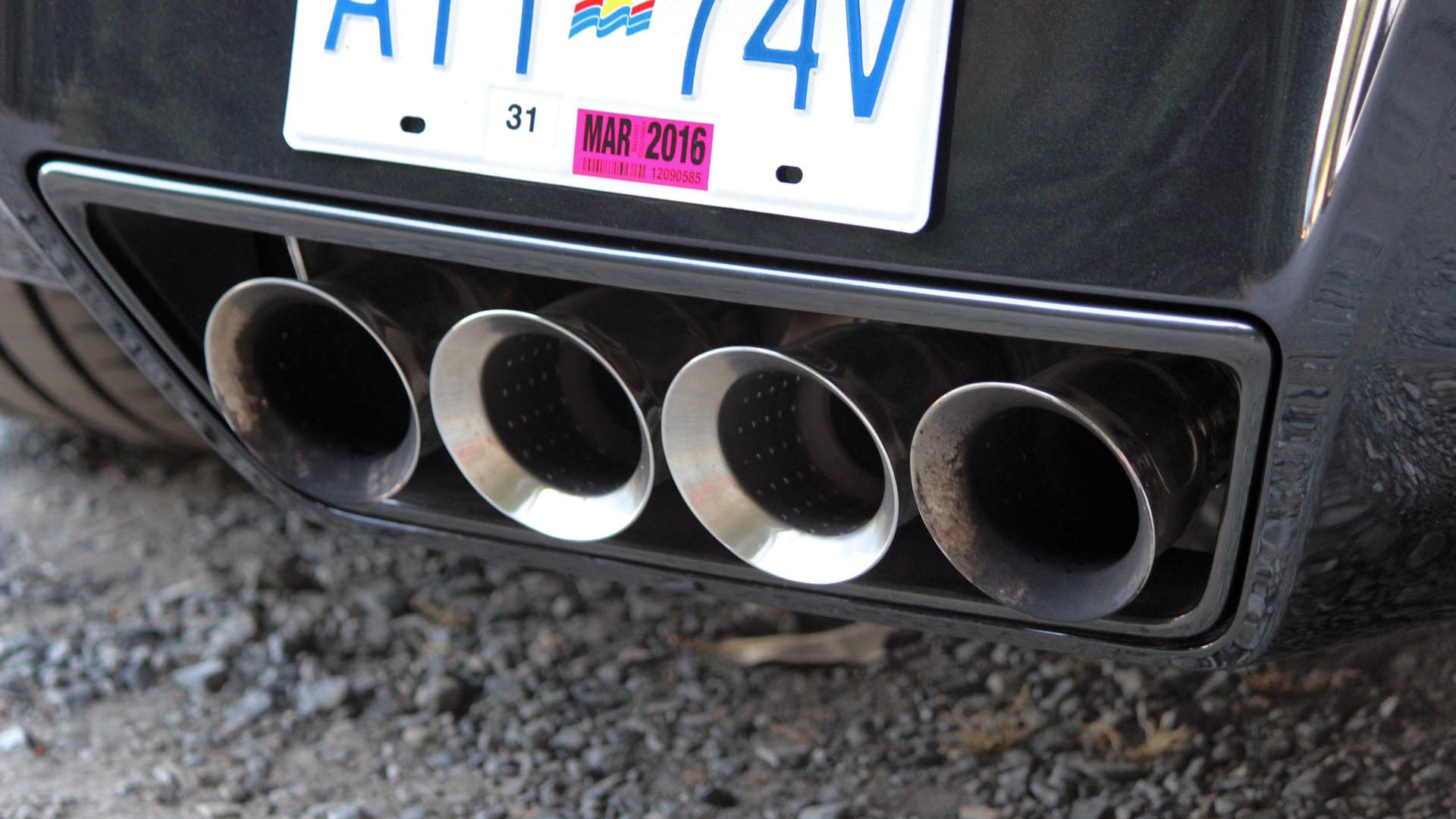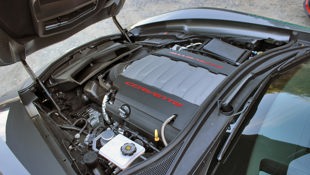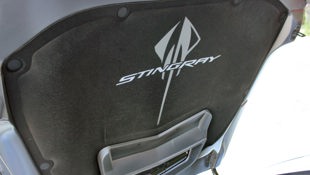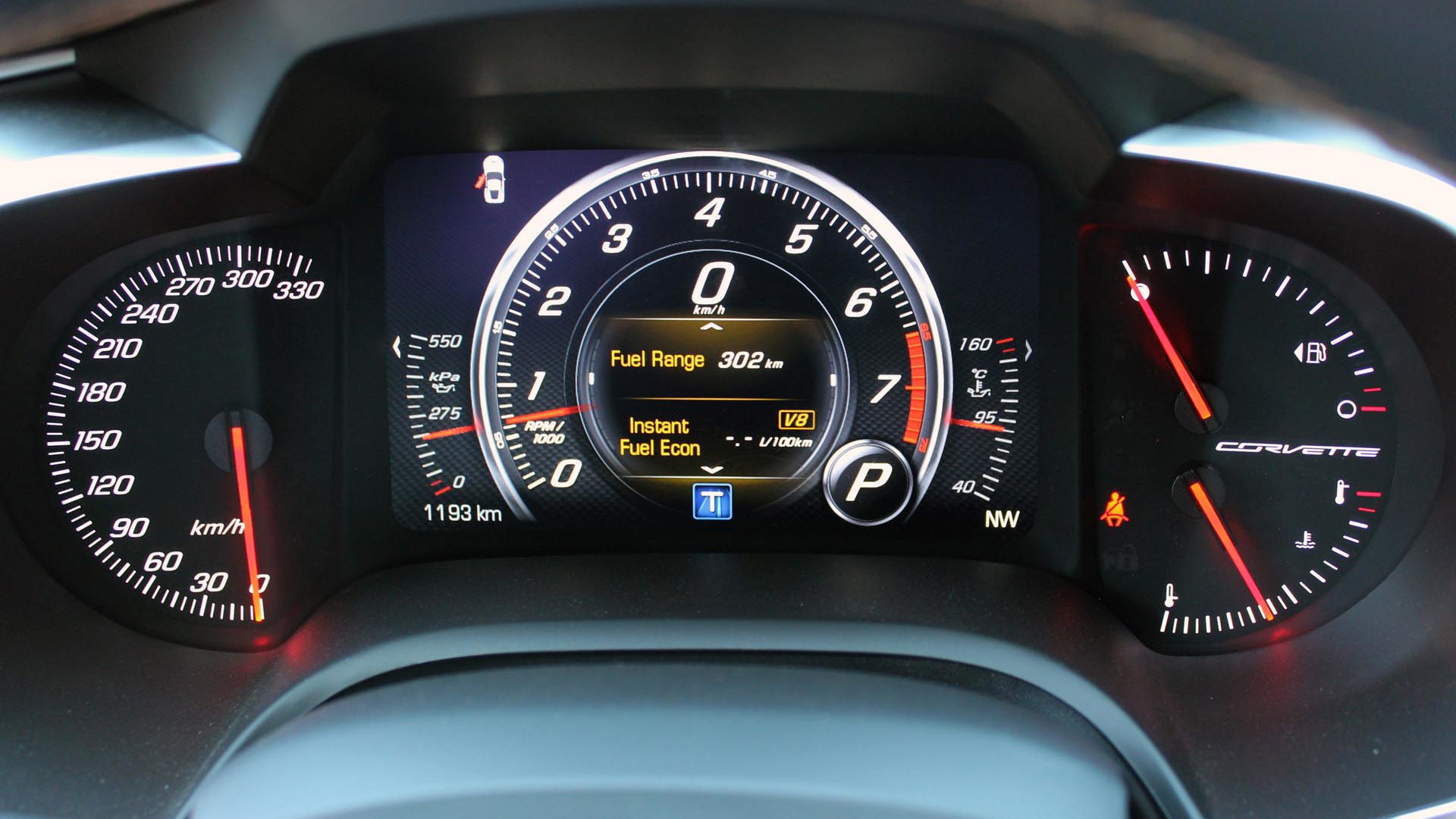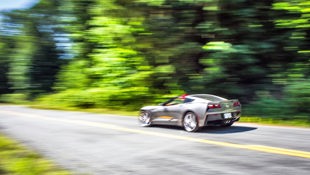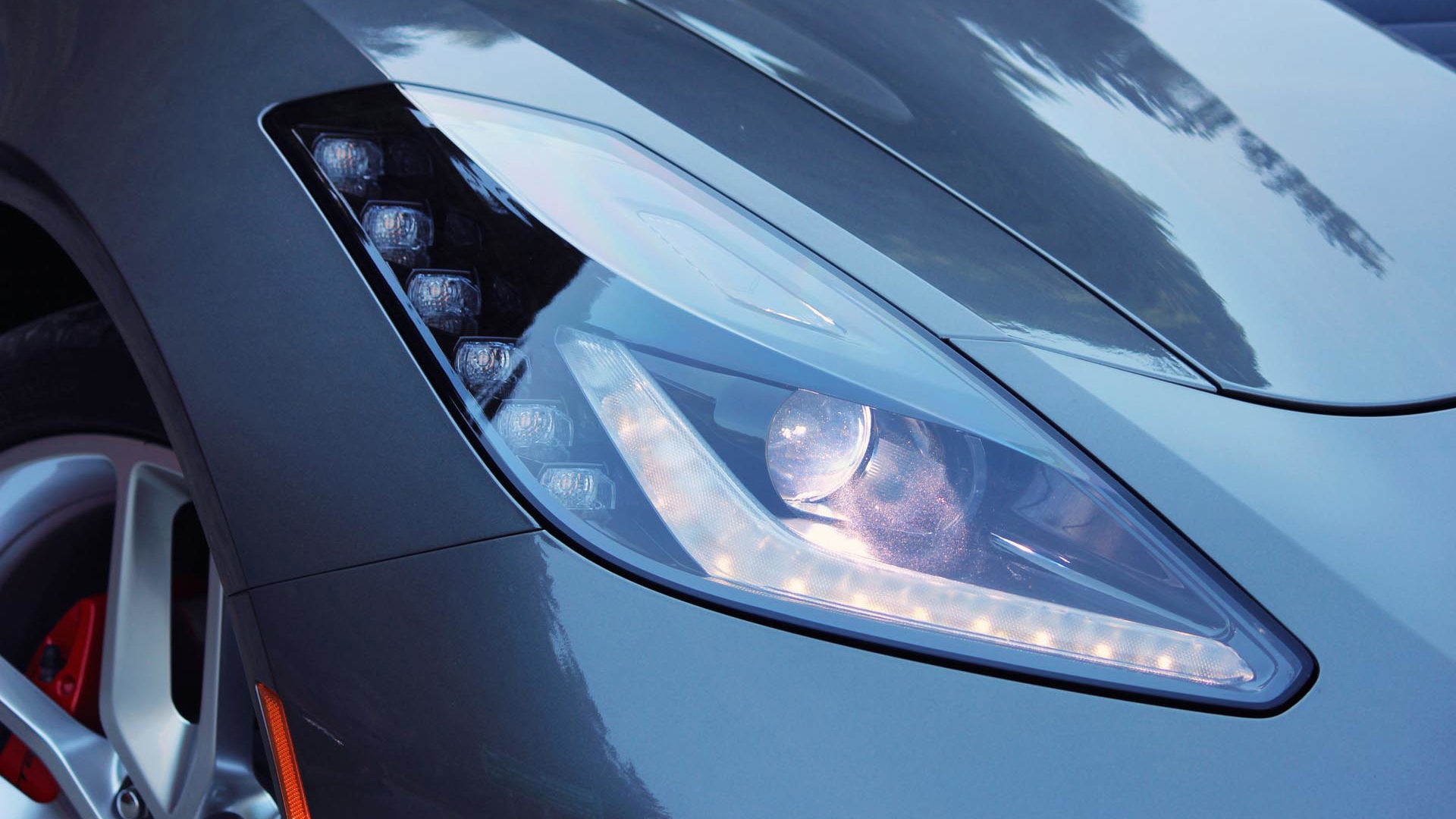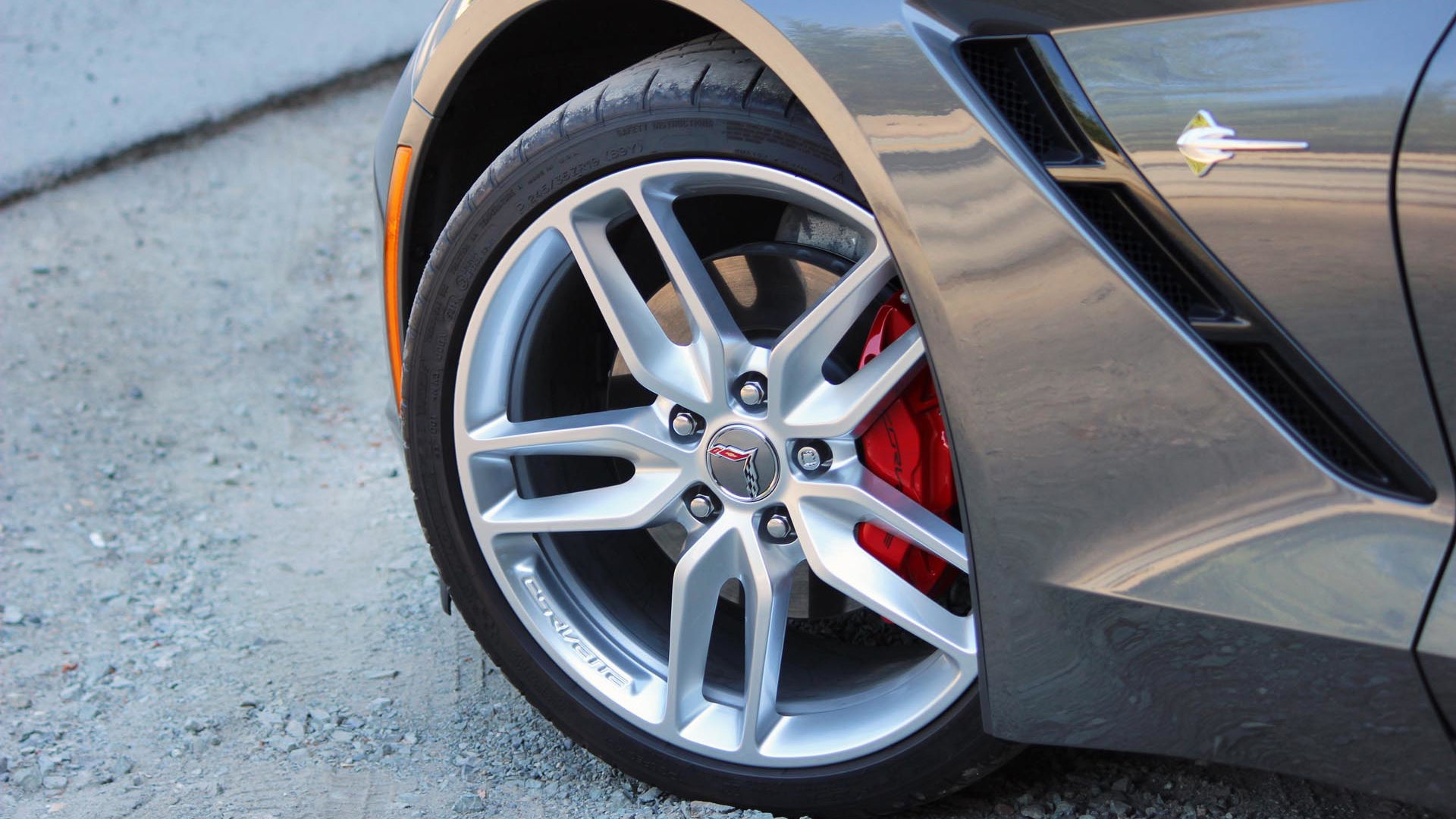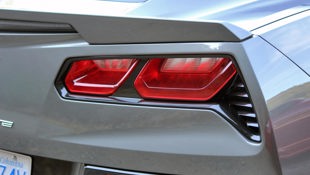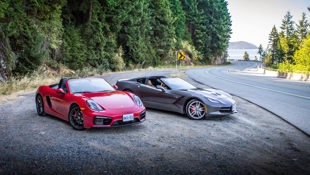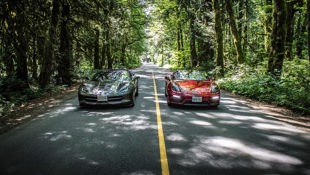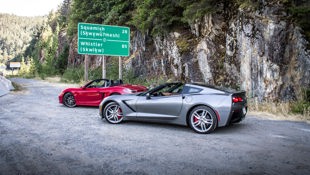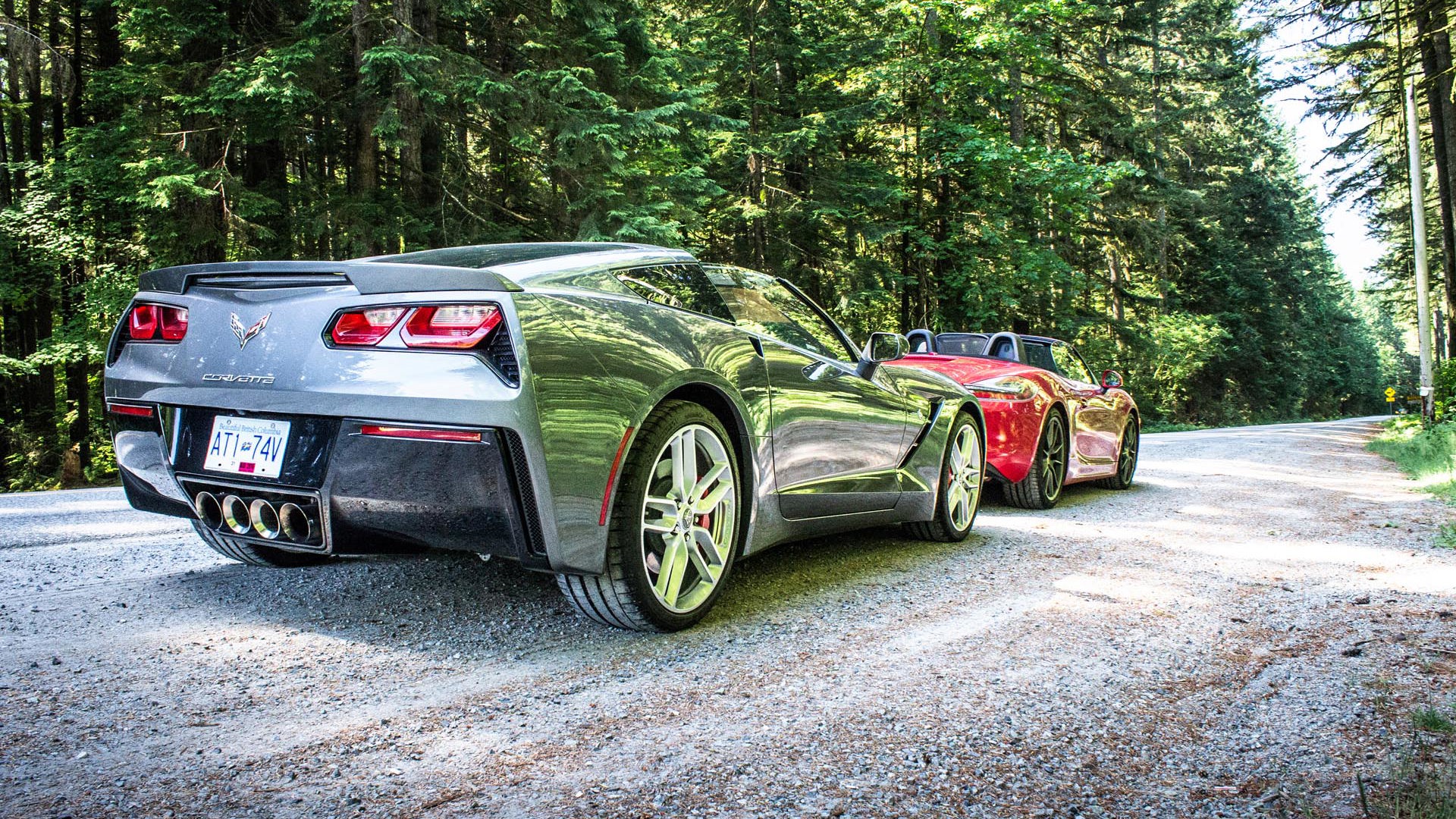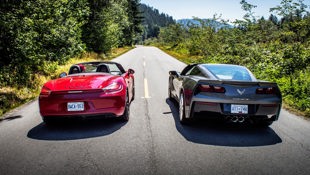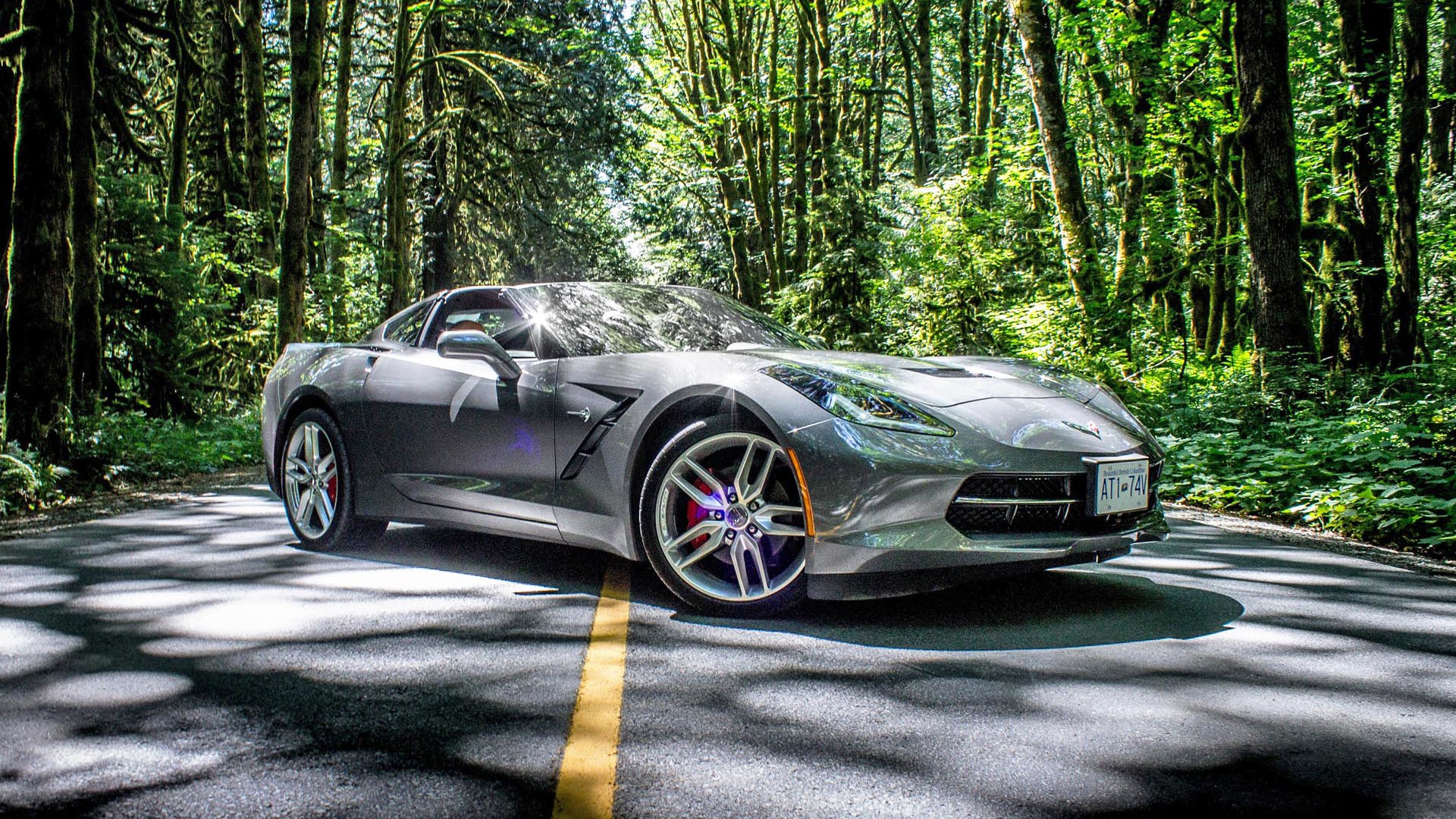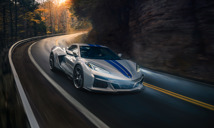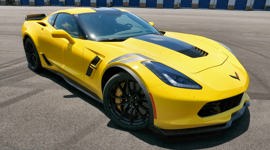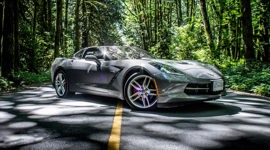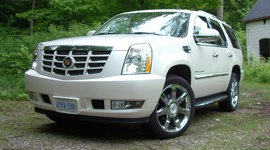Comparison Data
|
Base Price
$70,376
|
$83,900
|
|---|---|
|
Optional Equipment
$7,685 – Competition Sport Bucket Seats $2,095, 8-Speed automatic transmission $1,900, Dual Mode Performance Exhaust $1,255, Exterior Appearance package $935, Stingray Logo package $770, Red Brake Calipers $625, Battery Maintainer $105
|
$15,480 – Carmine Red paint $2,950, GTS Communication package $4,200, ParAssist w/reversing camera $1,730, Convenience package $1,030, Infotainment package w/BOSE $4,560, Platinum wheel paint $1,010
|
|
A/C Tax
$100
|
$100
|
|
Destination Fee
$1,800
|
$1,085
|
|
Price as Tested
$82,055
|
$100,565
|
Dan Heyman and Brendan McAleer
Dan says:
The Porsche entrant in the vs Corvette battle is now much more open to debate.
When you think of the Corvette vs Porsche rivalry over the years, it is Stuttgart’s iconic 911 that has always been the target because of their closer performance levels, racing pedigrees and legacy. However, with the release of the all-new Corvette Stingray last year and continuing popularity and improvement of the “affordable” Porsche sports cars – the Boxster and Cayman – the Porsche entrant in the vs Corvette battle is now much more open to debate.
Me? Well, I’ve brought the Boxster GTS along for good reason. Of all the cars I’ve tested over the years, from Audi R8s to Porsche Turbos to Shelby Mustangs and others in between, this particular Boxster, in all its Carmine Red glory, has stood out as possibly the best car I have ever driven, and if you’re working with an 80-100K budget for a new sports car, the Boxster or Cayman are the ones in that window.
Brendan, on the other hand, has come round with the latest of GM’s heavy metal (figuratively, of course; it’s rather light being crafted from aluminum and fibreglass) to see how it stacks up. I’m really looking forward to seeing the results.
Styling
Brendan says:
Incremental improvements, or a total change-up: that's the story here. Where the new Boxster design is a port n' polish of the previous generation – and the GTS some further sport-oriented polishing of that ideal – the Stingray Corvette is the same basic shape as the previous 'Vette, but a total re-fracturing.
It would appear to me that they haven't quite got the front end right. The flat-mouthed grille is a little too wide, a little too straight. It looks a bit like one of those unamused smiley faces.
However, the rest of the Vette is pure rock n' roll. Sit in the driver's seat and watch the heat waves come radiating out through the hood vent, and you can't help grinning at the audacity of this machine. There are other trim levels, more violence and volume up the line, but even this basic car feels audacious.
The Boxster, on the other hand, is recognizably a Boxster, and that means not a 911. Fine, especially when big-brother neunelfer has gone all GT, but were this tester not Carmine Red with black wheels, the price tag might surprise given the relatively conservative exterior. GTS models gain some unique fascia work, bigger wheels, a slightly lower suspension, and extra badging. In a more reserved colour, the Boxster could fly under the radar a bit, and perhaps that's a boon to a potential owner.
However, the 'Vette manages to be pure American rocketship, modern and brutal and vicious – and it still gets a base price tag that prods the question, “That's all?” We drove both of them through my little suburban neighbourhood, and a squadron of young boys on bikes went crazy over the Corvette. If there's a part of you that's still twelve, this Yankee Doodle's dandy.
Interior and Comfort
Dan says:
A bit of a wash, this, but still worth discussing for one big reason, that being how Chevrolet has finally – FINALLY – built an interior for their sports car that was worthy of both the performance contained within and the price point.
Gone are the acres and acres of super-scratchable plastic that Corvettes had become known for over the years. Instead, what we see in our tester is a nice suede-wrapped steering wheel and dash upper, plus some gorgeous tan leather for that great baseball glove feel that’s oh-so-fitting for performance cars, from Corvettes to Carreras, from Spitfires to TTs and everything in between.
The particular seats in our tester are actually the more bolstered items that Chevrolet offers for the Corvette, and they come at an additional $2,095 over the standard seats, even if you do select the $10,880 3LT option package for your ‘Vette from the get-go, as included in our tester. As far as interior goodies are concerned, 3LT adds that suede we talked about, navi via the (rather good) Chevrolet MyLink interface, head-up display and advanced 10-speaker Bose audio. That’s a lot of kit, and it’s well served here. Still, you will have to put up with a little plastic around the centre stack unless you’re willing to part with the additional $1,045 it takes to turn that into carbon fibre, which I’d heartily recommend.
The Boxster, it must be said, looks rather Spartan by comparison. Yes, there’s lots of suede in here, too, as it comes standard in GTS trim and lands in all the right sports; on the wheel, all over the seats, the armrests, the gear lever – all the right touch points, because this is a Porsche, and Porsche knows how to do these things. Plenty of carbon fibre to be found here, too: on the dash upper, the door panels and trimming the centre console.
It’s not quite as flowy as the ‘Vette, however; it’s a little more upright, a little less “enveloping”, shall we say, and just a little more analogue feeling (I guess this is a good place to mention that the Boxster’s gauge cluster is analogue, the Stingray’s partially digitized). Yes, there’s an infotainment system, but as we’ll see in next section, it seems like it may only be there because Porsche felt they had to put it in if they were going to sell to the greater populace (the one with money, that is).
The seating position, though, is spot-freaking-on. You’re more laid back in the Corvette, kind of like you’re sitting in a classic Le Mans prototype racer, an image that’s helped by the way the hood appears to be acres long as it stretches towards the horizon ahead of you. It feels more snug as a result, even though there’s technically more leg, shoulder and only slightly less hip room than there is in the Boxster. The super snug seats, no doubt, lead to that feeling of snugness.
Thing is, I like how you sit a little closer to the front wheels of the Boxster, a little more in the thick of things, as it were, and with a better view forward as a result. In the Stingray, it feels like you’re almost sitting directly over the rear axle. And, as someone whose long legs sometimes make reaching the wheel a little tough, the fact that you sit a little closer to said wheel in the Boxster is right up my alley.
Of course, you’re always going to get a better view out of the topless Boxster (even when you do pop the top of the ‘Vette, you’re still dealing with door pillars). Just a perk of being a drop top.
Both cars offer enough storage space for a weekend getaway, the Boxster a little more thanks to its twin storage compartments, front and back. The Corvette’s hatch is nice and wide, although you do lose that space if you decide to store the roof panel back there, which fits precisely thanks to four attachment points. While I managed to remove the top on my own, I wouldn’t recommend that. Two people would make the job much easier. The Boxster’s automatic roof, meanwhile, stows in about twelve seconds with the press of a single button; heck, it takes longer than that to open the door to my car park.
Tech
Dan says:
Yes, tech. If ever there were two cars that I feel just really didn’t need any kind of fancy infotainment or what have you, well, these are them.
Porsche seems to agree, in that their system is just a little old-school; the graphics aren’t anything special, the buttons surrounding the screen are tiny and it looks just a little too much like an aftermarket add-on. There shall be nothing distracting from the job at hand, the job of carving cracks into the canyon ahead.
The Corvette, by comparison, looks to be a tech whiz, which is strange considering the traditional feel of the entire experience of driving it. At eight inches, the touchscreen seems huge (well, it IS huge) and that gauge cluster is as Top Gun as we’ve ever seen from a Corvette. MyLink, meanwhile, is properly intuitive and a breeze to use thanks to big, sensitive buttons, slick graphics (save for the slightly muddy navi display) and a smart layout.
The one far-out thing the Corvette has over the Boxster that I do find fairly cool, however, is what Chevrolet calls a “Performance Data Recorder” that comes as part of the 3LT package. Basically it is a camera that records your journey in the “Tour” or “ECO” Driver Modes, or your performance data when in “Track” mode. Then, you can hook it up to a USB later, and see how well you’ve done. How about that? You go on a road trip through some spectacular scenery, and you can relive it later, all in 720p.
When in Track mode, you can review the g-forces endured and lap times, and it can be set to performance mode to track your 0-100 km/h times and quarter-mile stats. Superfluous? Perhaps, but I don’t mind it as a part of the 3LT package.
Performance
Brendan says:
Like Dan, I found the Boxster GTS to be one of the best cars I've driven all year, and with a six-figure price tag, it had better be. The open top provides an enhanced sensation of speed you don't get with the Cayman GTS, and having lapped on track with both cars, the 10-hp power difference between the soft and hardtop two-seater Porsches is completely negligible. Ignore those who would praise the Cayman's greater rigidity: either you like the wind in your hair or you don't.
In GTS trim, the Boxster's 3.4L pancake-six makes 330 hp at 6,000 rpm and 273 lb-ft at 4,500–5,800 rpm. Lusty stuff, and it sounds wonderful, but winding it out necessitates handling some extremely tall gears. If you're at redline in second, it's triple-digit time, both on the speedo and on your subsequent moving violation.
The seven-speed PDK gearbox spreads things out a bit, but the six-speed manual is still a delightful choice. It's been good here since the beginning, unlike the 911's early seven-speed stick, which was a bit of a dullard. Were it not for the Boxster's preference for 94 octane fuel, this is the sort of combination you'd love to use for exploring the upper half of the province, out there on the empty roads, free from adult supervision. It's a wonderful car, a get-up-early machine, and possibly even better to drive at real-world road-speeds than the new GT4 Cayman.
Jump into the Corvette, and there are several first impressions. First, all Corvettes smell the same, a sort of blend of glue and plastics that's not the equal of that whiff of leathery Porsche. Second, olfactory indications aside, this Corvette interior needs to apologize to no one. Snap one dial into touring, dab at the traction control a single time to put it into a looser mode, and slot the shifter into D.
Ah yes, an automatic Corvette. Where's my Hawaiian shirt? While the 'Vette's Right Stuff image has been the stuff of legends for years, slotting an automatic into one of these things implies that either you're a drag racer or perhaps a retiring retiree. (That's not ageism, by the way, I recently rode shotgun with a retired gent that snapped the six-speed shifter of his manual triple-black 'Vette through the gears en route to setting some extremely quick autocross times.)
However, here the Corvette now gets an eight-speed automatic transmission to handle its 455 hp at 6,000 rpm and 460 lb-ft of torque at 4,000 rpm. It's the equal of that found in the Jaguar F-Type, easily capable of doling out the power without being too much of a bummer. In Sport Mode, the shifts are quick enough on the way up to give Porsche's PDK a run for its money, and on the way down the prodigious torque helps cover any of that hydraulic mush you sometimes get with a conventional automatic.
Further, this Corvette is equipped with the 3LT feature load, but not the Z51 handling package. Uh-oh: it may be packing 455 hp and a staggered 19/20-inch wheel layout, but this is clearly the worst Corvette you can get for a performance test. It's the cruiser version, and we're up in the back 40 twisty-bits. Worse, it's up against the best iteration of the Boxster you can buy, short of the larger-engined Spyder.
Really, that's what makes the difference between these two cars all that much more impressive. You expect the Boxster to be a darty little machine capable of shrinking any power deficit with catlike reflexes and grip, and it does so, to a point. But the Corvette is just an absolute animal, pure speedboat nose-lift and bellowing anger. The Boxster GTS is actually the louder of the two cars, with a hard-edged, metallic rasp to its exhaust. Doesn't matter – the 'Vette's American thunder is just unstoppable.
Because it's the looser cruiser version, the Corvette did go a little nose-light on the really twisty bits, but the sheer power and grip of the thing is beyond reproach. This is another league above the Boxster in pace, and while there's something to be said for feel and overall drivability of the Porsche product, the Corvette just gets friendlier the longer I have it. Even in the wet, with roads slicked by grease after a very long dry spell, it's not trying to bite you. The power is phenomenal, accessible without being too accessible, fitting around you.
And then there's the grand touring aspect of this car. On the way back down the Sea-to-Sky, a dawdling RV pulled into the fast lane well back of another slow-moving vehicle, and began that familiar dance on BC summer roads: the no-pass waltz. In the Corvette, it wasn't even an issue, hammer-down, catch-and-pass before the gap shrank too much. No cutting off or carving up, just instantly available speed to get around a blundering obstacle that never checks its mirrors.
Add in fuel economy that was too close to call (the Corvette does surprisingly well, loping along with that eight-speed auto in high gear), and the performance bargain remains the performance champ. Official figures are 12.1/8.9 L/100 km city/highway for the Boxster and 14.6/8.1 for the Corvette. Like Dan, I praise the Boxster GTS for its overall balance and less showy demeanour, but just know that it's simply the slower car.
Handling
Dan says:
Yeah, yeah, yeah. The Corvette sounds great, it’s got power enough (and the power delivery) to make the Challenger Shuttle blush and all that. I know, but the handling is where that “best car I’ve ever driven” comes so clearly into focus.
There is just so very little that can be done to upset the GTS. It’s so dialed-in, so grippy and so rife with feedback (yes, even with electronic power steering), that it just makes you feel like such a pro. Intangible? Maybe, but those intangibles are such an important part of the sports car experience.
You sit just a little higher than you do in the ‘Vette, but it somehow still feels like your butt is hovering just centimetres above the tarmac below, even though you still have a pretty good view of the scenery as it begins to blur around you.
The result of all this is that the car shrinks around you, responding to every twitch of the wrist, every flex of the forearm; hell, it may as well respond to every thought you have, it’s that direct. I guess the big thing is that there’s no guesswork with this car; you know what’s going on under you to the point you’re always aware of the grip you have.
Brendan may disagree, but I just can’t say the same for the Corvette. There’s a phenomenal amount of grip through both the front and rear tires (although the generous traction control system lets you flare the rear end out more than you can in the GTS), it just takes a while to figure it out.
It’s a steering thing; on the tight canyon roads we were on, I just never got settled behind the wheel in the Stingray as I did the Boxster. There’s a surprising disconnect through the steering column to the front wheels. Brendan likened driving the car to driving a speedboat; all that power back to the rear wheels, enough to lift the front end clear off the tarmac, it seems. Trouble is, it don’t matter too much when a speedboat lifts its hull; in a car, though, you need them front wheels to steer. Yee-haw.
Still, both cars change direction with gumption, both stick to the tarmac as if their livelihoods depended on it and are great examples of both manufacturers’ years and years of development. You don’t just get grip levels like this overnight.
I guess one of the knocks I have against the Boxster is that it’s almost too grippy. It becomes an issue at low speeds, especially with our tester as it doesn’t have the $310 Power Steering Plus option that eases the effort it takes to maneuver the car when things slow down. The Corvette, with its plethora of driving modes, is actually a single-hand breeze to thread through the car parks and other obstacles that litter the urban jungle.
What the GTS has that the Corvette doesn’t, however, are selectable damper modes. They’re standard on the GTS and while you can get adaptive Magnetic Ride Control on your ‘Vette, you have to first select the $67,245 Z51 package, then add the dampers for another $1,885.
On the GTS, you can either select “Sport” dampers separately, or have them automatically activate by selecting the “Sport Plus” driving mode. Boy, do you feel the difference; if the Boxster was taut before, the sporty dampers tighten the screws even more, turning the GTS into something just this side of a track special. Which is probably the only time I’d use the setting; it’s a little too firm for everyday work. Good that you can set the dampers independently of the drive mode—I like the rest of Sport Plus; the power delivery, exhaust sound et cetera—so it’s nice to be able to take advantage of all that without having your fillings rattled.
In the end, though, you just want to continue to carve the canyons in the Boxster; continue to clip the apexes and power out until the cows come home. I just don’t feel that way, to the same degree, with the Stingray. It’s fantastic, that’s for sure, just not quite as fantastic—handling-wise, anyway—as the Boxster GTS.
Conclusion
Brendan says:
One of these days, Dan and I will agree without reservation on a verdict. Here, I'm duly required to point out that he'd probably have taken the Boxster over the 'Vette six ways from Sunday. Having written those words down, let me fully disable the traction control on the Corvette, and do a giant burnout on them.
As pointed out earlier, this is a matchup between the penultimate version of one excellent sports car, and the blunted, cruiser version of the other. Because Chevrolet keeps the cream of their press fleet down in the US of A, we're often stuck with Miracle Whips – zingy, sure, but not quite full fat. The Corvette, then, was effectively fighting with one hand tied behind its back.
Doesn't matter. Because V8. More than that – there's a sense of pride here in the Corvette that's combating pragmatism in the Porsche. The GT cars at Porsche have that same feel, as if there are renegades at work on them, trying to beat the world's best. The GTS, by comparison, while a thoroughly excellent car, feels like it fits a niche on the profit and balance sheets as much as it does in an engineer's heart.
The Corvette Stingray feels like it was engineered by people who wanted to make the best two-seater sports car they thought they could build. The Boxster GTS feels like it was engineered by people who wanted to make the best two-seater they thought they could sell. Resale, long-term-quality, image – there are any number of additional arguments to be made. Really though, I'd have another shot of that raw Kentucky bourbon over the cold precision of reinheitsgebot lager.
| 2015 Chevrolet Corvette Stingray 3LT Warranty: 3 years/60,000 km; 5 years/160,000 km powertrain; 6 years/160,000 km corrosion perforation; 5 years/160,000 km roadside assistance |
| 2015 Porsche Boxster GTS Warranty: 4 years/80,000 km; 4 years/80,000 km powertrain; 12 years/unlimited distance corrosion perforation; 4 years/80,000 km roadside assistance |
